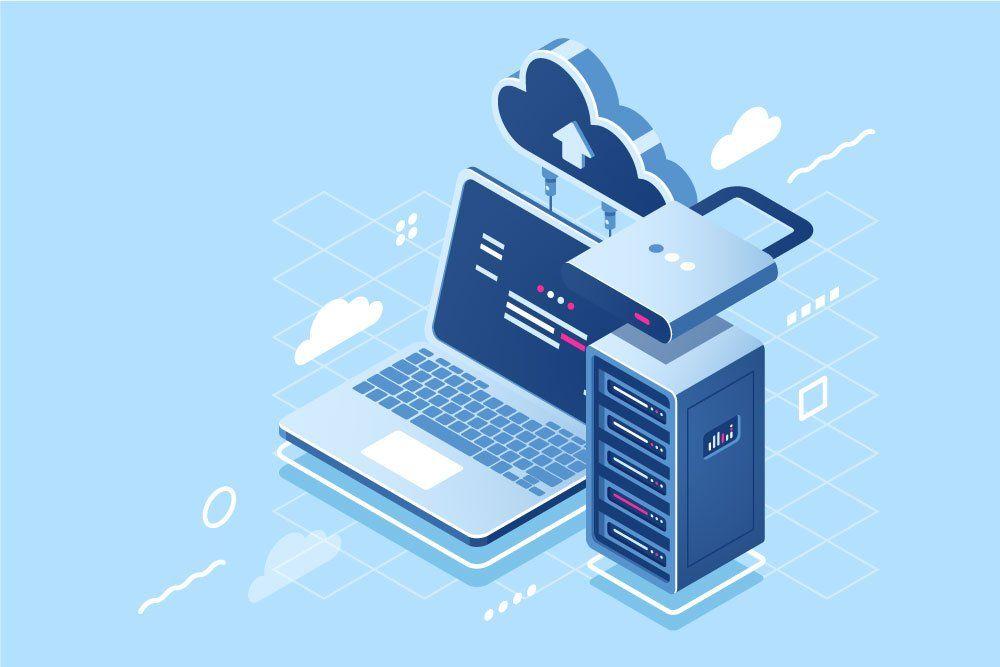数据倒序

Social media monitoring
Social media monitoring is the process of identifying and analyzing mentions of a certain brand or product through different social media platforms, forums and other websites.
Let’s find out why businesses implement social media monitoring in their marketing strategies.
Why is social media monitoring important?
When brands use social media monitoring, they can do the following things.
Analyze direct mentions of a brand. You can collect direct @mentions across social media to easily react to customer behavior and deliver value at the right time.
Analyze indirect mentions. You can see public messages and comments from all around the web that only include a variation of your brand’s name, with no hashtags whatsoever. This allows you to understand the context.
Spend less time on manual data collection. If you analyze brand mentions across all social media where your business is present, you will probably have to switch between many apps and manually search for mentions to stay on top of it. Social media monitoring tools (which we will discuss later in the article) allow companies to automate this time-consuming process.
Improve customer care strategies. It can lead to faster response times, prevent public relations issues and identify brand advocates. Improving your customer care strategy increases customer loyalty and brand awareness.
Improve overall marketing strategy. Insights gained from social media monitoring help brands improve relationships with potential customers and quickly respond to their behavior, reactions, needs, pain points, and desires. This data can be used later for strengthening your communication, improving content quality and selling strategies.
Let’s find out the benefits of using social media monitoring.
Benefits of Social Media Monitoring
Social media monitoring helps companies get the idea of their company's public perception, which allows them to:
react to consumers’ behavior on social platforms in real time;
determine how certain demographics feel about your brand;
use positive feedback as a social proof in your strategy;
use negative feedback to solve issues at any buyer’s journey stage;
build brand credibility and authenticity;
eliminate channels with the lowest engagement levels to save money and effort;
analyze performance of different social media marketing campaigns;
calculate return on investment through advanced reporting capabilities.
Let’s discover the principles according to which social media monitoring works.
How does social media monitoring work?
Social media monitoring works similar to search engines like Google and Bing. The robot crawls social media platforms in search of predefined keywords. This activity is completely legal and compliant with GDPR laws.
No matter what tool you choose, there are three key processes in social media monitoring:
Setting-up. First of all, you need to set up a project where you list the keywords you want to track across the internet and social media. It can be your brand’s name, product names and combinations of both. An advanced setup may require excluded keywords to make an even more specific inquiry.
Collecting. The tool collects mentions into a dashboard report. It usually offers plenty of filters to clean up, group, mark and delete collected mentions. Social media monitoring tool also allows you to receive mentions directly to your inbox in a format of real-time, daily, and weekly reports.
Analyzing. Data analysis varies between different tools. Some tools focus on volume, engagement and reach metrics, the others — on sentiment and influence of social media mentions.
These three processes are the core of social media monitoring. Once you have your keywords in place, the service collects mentions and comments across the internet and provides metrics that will help you better understand the context and come up with correct reactions at the right time.
A process that follows is creating a strategy based on social media monitoring insights, which is called “listening.” Let’s find out the difference between social media monitoring and listening.
Social Media Monitoring vs. Listening
These processes are equally important parts of collecting feedback from the audience. The main difference between them is that social media monitoring is just a process of collecting and sorting mentions while listening is the actual analysis of those insights with intention to build a better marketing strategy based on this data.
Besides, monitoring can be automated, while social media listening requires a lot of manual work and thoughtful analysis, creativity, and ability to deeply understand user intentions and emotions behind their behavior on social media.
Social media listening is an important research tool that is meant for analyzing user interactions with your brand across the internet and finding the ways to put what you learn into action. That can be something as small as responding to a happy customer, or something as big as shifting your entire brand positioning. Marketers often use this tool to analyze their competitors, discover new sales leads, and identify influencers and brand advocates.
Just like social media monitoring, there are services that provide tools for listening. These services usually provide tools for both processes, that’s why it’s best to regard them as an integrated whole, because none of them makes sense without another.
Let’s review some tools that will help you succeed at social media monitoring.
Social Media Monitoring Tools
We’ve collected three popular social media monitoring services.
Hootsuite
Monitoring tool is one of many social media management tools available at Hootsuite. With Hootsuite, you can set up automated crawls of social media content based on your mentions, selected keywords, hashtags, and locations. It also provides real-time audience insights to help you identify what the audience feels about your brand, detect thought leaders, and get immediate alerts if there are suspicious numbers of mentions. Furthermore, Hootsuite integrates with more than a hundred apps to add more functions to its dashboard.
Below there is a Hootsuite dashboard which includes brand mentions on Twitter.
Platforms supported: Instagram, Facebook, Twitter, YouTube, LinkedIn, Pinterest, blogs, forums, etc.
Pricing: The Professional plan offers a 30-day free trial and $19 per month after expiration. It allows you to connect one user and up to 10 social media accounts. Unlimited post scheduling and aggregated inbox for messaging are the features available on any plan.
The Team plan costs $99 per month with up to three users and 20 social media accounts, as well as management tools for the team, such as assignment of specific comments to different team members.
The Business plan costs $599 per month with over 5 users, 35 social media accounts, 24/7 priority support, integrations with Zendesk, Slack, Basecamp, etc.
The Enterprise plan offers custom solutions and more additional features such as quarterly business reviews and reports on the team's performance.You can find more details on Hootsuite pricing page.
Sprout Social
Similar to Hootsuite, Sprout Social’s monitoring and engagement tools are part of its social media management software. Sprout Social provides two separate features for social monitoring and engagement.
In the Smart Inbox, you’ll get all your social media mentions and messages. The discovery feature allows you to search for particular keywords on Twitter or Instagram, including mentions without tagging your social media profile.
Below there is a social media monitoring report in the form of a calendar. You can see comments and mentions across social media platforms as well as the number of daily interactions with a brand.
Platforms supported: Twitter, Facebook, Instagram, LinkedIn, and YouTube.
Prices: All plans have a 30-day free trial. The Standard plan costs $99 per month with 5 social media profiles to connect, all-in-one social inbox, crafting and publishing posts, profiles, keywords, and location monitoring and more.
The Professional plan costs $149 per month with 10 social media profiles to connect, includes all features from the Standard plan plus competitive reports for Instagram, Facebook, and Twitter, incoming and outcoming message content tagging, custom workflows for multiple approvers and steps, and more.
The Advanced plan costs $249 per month with 10 social media profiles to connect, all features from the Professional plan, Message Spike Alerts for increased message activity, digital asset and content library, chatbots with automation tools, saved and suggested replies, Automated Link Tracking and more. You can find more information on Sprout Social pricing page.
Agora Pulse
Agora Pulse is an all-in-one social media management tool, which has scheduling, monitoring, engagement, and analytics features. All your social media mentions are collected in the inbox, while its listening feature allows you to search for keywords, URL, and handle on Twitter. Agora Pulse also allows you to monitor comments on your Facebook and Instagram ads.
Below you can see the dashboard, where you can quickly respond to customer comments across various social media platforms.
Platforms supported: Facebook, Twitter, Instagram, LinkedIn, YouTube.
Pricing: The service offers a 30-day free trial. The Pro plan costs $79 per month with 2 users and up to 10 social media accounts to connect.
The Premium plan costs $159 per month with 4 users and up to 25 social media profiles to connect.
The Enterprise plan has custom pricing options with 8+ users and 40+ social media accounts to connect. You can find more information on Agora Pulse pricing page.
Let’s find out how to begin monitoring user activities across your social media channels.
How to get started with social media monitoring?
Here are steps to begin and succeed at social media monitoring.
Choose a social media monitoring platform. Consider pricing and functionality that is crucial for your business. Make sure that a social media monitoring service of your choice specializes on platforms where your business works. You can use free trials and request demos to better understand how certain services work to make the right choice.
List the relevant keywords for crawling. Make up a list of keywords based on your brand name, including possible misspellings. You can also include product names that are connected with your brand and add keywords related to your competitors in case you want to analyze their responses to customers across social media platforms.
Prioritize the processes. Since social media monitoring includes many different processes you should correctly prioritize them. The most important thing is to solve negative issues as soon as they appear. It’s especially harmful when it goes viral, so it’s best to take control over such situations right away. The next key aspect of monitoring social media is to communicate with people who mention your brand in a positive context. This will help you collect more leads, establish a good reputation, and build rapport with your audience.
Use the service's functionality to the maximum extent. Try to utilize available features to get the most out of social media monitoring. Once you feel that results are not satisfying or available functionality does not meet your needs, consider changing a plan or switch to another service, which offers the right tools for you.
Create an effective strategy. You need to find ways to deal with all mentions across social media and provide as much value to the audience as possible. A great strategy must be a combination of social media marketing, monitoring, and listening. It all starts when you create relevant and engaging content. Then people react to it and you collect and analyze those reactions. Lastly, you need to respond to both positive and negative feedback because it will improve your chances to make a good public impression and create more buzz around your brand and products.
Congratulations, you’ve learned what social media monitoring is, got acquainted with it’s benefits and working process.

Social media for nonprofits
Social media for nonprofits is using social media platforms and online communities to boost awareness, connect with donors, and help NGOs (non-governmental organizations) reach their missions. Social media networks allow nonprofits to communicate with their target audiences, share stories, engage with supporters, and raise funds.
In this article, we’ll unveil the reasons for nonprofits to use social media and the benefits it carries for them. We’ll also provide a guide on building a social media strategy for nonprofits, some excellent tips, and examples.
Why should nonprofits use social media?
There are numerous reasons for non-profit organizations to start using social media. Below, you can find the biggest ones.
Better visibility and reach. Since social media networks have billions of users who actively use the platforms, NGOs can expand their audience and act not locally but internationally. They can connect with donors, supporters, and volunteers worldwide, reaching their missions faster.
Cost-effective marketing. Social media networks provide a cost-effective and powerful means to communicate your message to the right audience, allowing more people to participate in your social impact. They enable you to share content in various forms, including videos, images, and stories.
Community building. With Instagram and Facebook, nonprofits can establish and nurture communities of supporters, volunteers, donors, and beneficiaries. You can create dedicated groups, pages, or hashtags where members can connect, share resources, and participate in discussions about your NGO's mission.
Fundraising. Social media gives you access to various fundraising tools to collect funds and engage donors. You can use these channels to promote fundraising campaigns, crowdfunding initiatives, and donations, allowing individuals to send money through Facebook, Instagram, and Twitter.
Engagement. You can share compelling stories, testimonials, and success stories related to your cause. By sharing your mission and possible social impact, your nonprofit inspires and engages its audience, fostering a deeper emotional connection and sense of solidarity with supporters.
Awareness campaigns. Social media serve as a valuable tool for nonprofits to advocate for social and environmental causes, raise awareness about important issues, and attract supporters for advocacy campaigns. Your NGO can use social media to amplify your messages, share relevant news and information, and search for public support for policy change, social justice, and environmental conservation efforts.
Now let’s review the pros you can reap after incorporating social media into your marketing strategy.
Benefits of Social Media for Nonprofits
Social media offers numerous benefits for nonprofits, providing them with powerful tools to reach their missions, engage with donors, and drive impact. Here are some of the main pros.
Cost-effectiveness. Social media provides cost-effective marketing and promotion channels to raise awareness about your mission, programs, and events. Nonprofits can leverage social media to share stories, videos, photos, and other content without incorporating expensive advertising campaigns.
Real-time communication. You can communicate with your audience in real-time through social media, providing updates, news, and information about programs, events, and impact. These platforms help you respond to inquiries, address concerns, and start conversations with your followers.
Donor acquisition. Social media platforms offer powerful tools to interact with donors and encourage them to participate in your initiative. They allow you to showcase your impact and highlight the importance of financial support, inspiring people to contribute.
Data and analytics insights. Social media networks provide powerful analytics tools your NGO can use to track the performance of your posts, campaigns, and engagement metrics. By analyzing this data, your organization can gain valuable insights into its audience demographics, content effectiveness, and engagement trends, enabling you to improve strategies, optimize outreach efforts, and maximize impact.
Now that you know about the pros, it’s time to proceed to the short guide on building a social media strategy for nonprofits.
How to build a social media strategy for nonprofits?
Creating a social media strategy for NGOs implies following several important steps to ensure effective communication, engagement, and fundraising efforts. In this section, we’ll provide you with a well-structured guide on doing this.
Define goals. Before diving into a social media strategy, you should figure out what you want to achieve through social media. For instance, your goal can be raising awareness, increasing donations, or recruiting volunteers. When making up your main objectives, ensure they are specific, measurable, achievable, relevant, and timely.
Identify your target audience. The next step involves understanding who your target is: donors, volunteers, beneficiaries, or another group of people. For this purpose, consider conducting audience research and finding out about their demographics, interests, and behavior.
Determine the networks your audience uses. You need to identify the social media platforms where your audience is most active. Networks like Facebook, Twitter, Instagram, LinkedIn, and TikTok are suitable to communicate your message, yet based on your audience demographics and content type.
Create attention-catching content. When developing content for your NGO, you should ensure it aligns with your mission and resonates with your target audience. Consider sharing stories, testimonials, impact updates, and behind-the-scenes so that people can know what you do and how you bring change to society. They can feel the atmosphere and other people’s problems and strive to help your organization.
Engage with your followers. Communicate with your audience in various ways, including comments, messages, and mentions. By encouraging user-generated content and participation through contests, polls, and challenges, you’ll make your audience more active and eager to bring change to the problems your nonprofit fights with.
Add visuals. Since visual content performs better on social media, consider using images, videos, and graphics when making posts. For the best results, incorporate relevant visuals that have high quality.
Use hashtags and trends. To improve the visibility of your posts and join relevant conversations, consider using relevant hashtags. Tracking trending topics and hashtags allows you to participate in broader discussions and boost your social media reach.
Assess performance. Pay attention to key metrics, including engagement rates, reach, click-through rates, and conversions. When utilizing social media analytics tools, you can collect insights into your content and make adjustments to improve your strategy accordingly.
Collaborate with opinion leaders. It would help if you collaborated with other nonprofits, influencers, or businesses to spread your message to a wider audience and bring more volunteers and donors to your organization. By establishing positive relationships with followers, supporters, and community members online and offline, you’ll be able to engage with them and encourage them to impact your initiatives.
Now that you know how to create a social media strategy for your nonprofit organization, it’s time to check out some useful tips.
12 Best Tips for Nonprofits Using Social Media
Using social media for nonprofits is a must since they can engage with supporters, raise awareness about their cause, and drive donations. Yet you should do it right to achieve the necessary results. Here are some valuable tips for improving your organization's impact on social media.
Tell stories of impact. Consider sharing success stories and testimonials to humanize your organization and demonstrate your impact. You can share stories of your volunteers and other people involved from their perspective.
Contribute to user engagement. Encourage interaction and engagement with your audience by asking questions, hosting polls, and responding to comments and messages quickly.
Utilize visual elements. You should use visually appealing images, videos, and graphics to catch people’s eyes and communicate your message. When adding visuals to your Instagram, Facebook, or TikTok, ensure they resonate with your audience and your organization.
Optimize timing and frequency. Before sharing your posts on social media, you need to find the right moment. Consider posting content when your audience is most active and likely to engage. To identify the right timing and frequency, conduct a short research. It will help you to find out what works best for your organization.
Use hashtags effectively. Consider researching to identify the relevant hashtags you can use to increase the visibility of your content. You can add popular and niche hashtags to your posts to reach a broader audience.
Develop a posting schedule. You can keep your audience engaged and informed by sticking to a regular posting schedule. For creating a posting schedule, consider utilizing special tools to plan and automate posts and adjust to current events and trends.
Collaborate with partners. Partner with other nonprofits, influencers, businesses, and community organizations to amplify your message and reach new audiences.
Give value. When posting on social media, make sure your content is valuable and informative, meeting your target audience's needs and interests. Consider giving helpful resources, tips, and educational content related to your organization and mission.
Include calls to action. Add CTAs to your posts, encouraging your followers to donate, volunteer, or sign petitions. They should be clear and visible to users.
Track and analyze performance. After incorporating your social media strategy, monitor its performance. Consider using analytics tools Instagram, Facebook, TikTok, and other platforms offer. Once you receive the insights, you should adjust your strategy to improve the performance over time.
Stay transparent. When communicating with users on social media, you need to maintain transparency and authenticity. Your posts should be honest and genuine, sharing information about your organization, activities, and impact.
Consider establishing a community. By building trusting relationships with followers and creating a community, you encourage them to participate actively in conversations. They can support relevant causes and highlight the achievements of others in your community.
Now that you know some effective tips, let’s proceed to the examples.
Nonprofit Social Media Examples
Numerous NGOs use different social media networks to reach their goals and bring social impact to societies worldwide. In this section, we’ll review some successful examples of incorporating social media into nonprofits.
Feeding America: Informing about Events
Feeding America is a well-known organization with 200 food banks focusing on hunger in the United States and striving to fight these problems. This nonprofit network uses social media to boost awareness, bring more donors, and increase food supplies to those in need. The organization uses various Instagram tools, including stories, posts, and highlights, to communicate the problem to a broad audience worldwide and fight hunger, which is still a big problem for many countries in the 21st century.
The nonprofit informs about its upcoming events through Instagram stories and saves all the important information in its highlights. This is necessary for those who missed stories but would like to know more about a webinar or offline event and maybe attend it.
Save the Children
Save the Children, the humanitarian nonprofit established for children, actively uses social media to promote its initiatives and gain support from all around the world. The organization shares stories on Facebook and encourages donors to participate in making the children’s lives who suffer from wars and extreme violence better. This NGO starts various initiatives on holidays, including Valentine’s Day. Save the Children invites you to join the Save the Children Action Network and donate to kids worldwide.
Danish Refugee Council
The Danish Refugee Council is a nonprofit organization focused on helping refugees flee their homes. The organization takes care of people who have to leave their houses because of wars, earthquakes, flooding, and other disasters. This NGO encourages social media users to donate and help people who have their homes destroyed.
Congrats, now you know what social media for nonprofits is and why it’s crucial. Hope that our guide and examples will inspire you to create an outstanding strategy for your social media strategy.

Social marketing
Social marketing is a long-termmarketing approach that uses promotional methods to alter human behavior, bring about social change, and improve people’s lives and the environment.
In this article, we’ll explore the importance of social marketing and make the difference between social and commercial marketing clear. We’ll also unveil 5 social marketing tips and examples.
Why is social marketing important?
Social marketing helps changepeople's behavior patternsfor the common good. When implementing this approach, companies don’t try to transform people’s perceptions for their benefit but to bring about social change, as marketing techniques allow companies to contribute to society's well-being.
Unlike commercial marketing, social marketing focuses on solving emerging world problems. It aims at evoking consciousness, changing behavior patterns, and helping improve the environment people live in. It’s possible to reach these goals when people are ready to change. According to statistics, 80 out of 100 adults are ready to contribute to social change.
Since there’s an increasing number of social and environmental problems, sustainability should be people's priority. Negative environmental and social changes worsen the quality of life. To prevent this, some companies turn to social marketing. Itaims to ebbmajor worldissues like hunger, poverty, inaccessibility of education, air, water, and noise pollution, global warming, deforestation, loss of biodiversity, etc. They raise these issues to encourage individuals to be more conscious and carefor their environment, helpthose in need, and change their perspectives on life.
Now that you have a clear understanding of social marketing and its benefits for society, let’s proceed to the next section todiscover the difference between the two types of marketing to avoid confusion.
Social Marketing vs. Commercial Marketing
There’s a fundamental difference between social and commercial marketing. Both seek to have an impact on people, yet they have completely different goals.
Social marketing is an approach that uses marketing tools to bring about social change. Social marketers aim to raise awareness of social, environmental, and economic issues, such as hunger, poverty, sustainability, education, public health, global warming, and others. Through social marketing activities, communities strive to impact people’s behavior, evoke consciousness, andinspire change. With social marketing, companies encourage people to be more awareof world problems and help those in need.
Social marketing usually has a broad audience, and it’s oftenchallengingto reach them. With the help of public funds, social marketers try to change our society for the better.
Commercial marketing is a marketing approach that makes use of marketing tools to influence customers’ emotions, thoughts, and purchasing decisions. Unlike social marketing, this method focuses on driving sales and bringing revenue. Commercial marketers do everything possible to reach their targetand sell their products using advertising and marketing tools.
Simply put, with social marketing, companies strive to influence people for the common good, while with commercial marketing, they try to influence customers’ purchasing decisions and drive profits.
So, now that the difference is clear, it’s time to unveil social marketing tips to effectively build your strategy.
5 Social Marketing Tips
There arenumerousstrategies out there that can help you implement social marketing effectively. Since the success of your campaign depends onhow suitable your selected methods are, we’ll provide you with 5 amazing tips.
Conduct research on your audience. Understanding your target audience lets you know how to act. Data-driven research allows you to have a clear picture of your audience’s behavior. As a result, you’ll select the right strategies and methods to approachthem effectively and convey your ideas.
Be convincing. To attain your end result, you should be confident in yourself and your beliefs. Changing society for the better requires you to influence people's behavior and make them think about issues like hunger, poverty, environmental problems, and lack of education. Express your thoughts clearly and confidently. It will help you awaken people's trust and respect and change their ways of life.
Choose the right slogans. Like any other marketing campaign, yours should be memorable, short, and clear. Be straightforward and transparent. It’s always a great idea to use catchy short slogans. For example, let's take the anti-drug social marketing campaign from the US government. If you see the “Just Say No” slogan, you’ll at least notice, and at most, it’ll make you remember it.
Use visuals wisely. Communities often use images to demonstrate the problem and influence people. It’s a wise step. However, you shouldn’t overdo it. Add images to show the consequences of some urgent issues. For example, anti-smoking campaigns often include images of people with health problems caused by cigarettes.
Focus oninfluencing behavior patterns. There are many approaches you can apply to influence human behavior. Search for methods that are perfect for your case. Effective initiatives require you to focus on one audience and one behavior at a time. Select groups of people who are ready to change and contribute to societal change. Study the behaviors in different places, times, and communities. It will help you figure out how to approach different individuals. This way, you’ll reach your goals and bring social change.
Now that you know the tips, let’s explore some real examples.
Social Marketing Examples
You can encounter many social marketing campaigns that try to change our environment and people's attitudes towards it. Unique, outstanding, and different campaigns have one main purpose: to impact. These campaigns aim at creating a change in our society, nature, economy, and behavior. We’ve gathered some excellent examples of communities that promote sustainability and social change.
Friends of the Earth
Friends of the Earth is a community that aims to make different areas climate-friendly, fight for social justice, and protect nature. This organization cares about different issues, including plastic pollution, communities’ empowerment, climate breakdown, extinction of species, and more.
Tips From Former Smokers Campaign
The campaign focuses on people who quit smoking because of health problems. This way, CDC’s Office on Smoking and Health wants to show the consequences that can appear. This social marketing campaign entails the profiles and stories of real people who face health issues caused by smoking. These people talk about their life paths and how smoking influences their family members. In 2021, the office ran this campaign on the national network, online, and on the radio. It offered viewers the opportunity to explore different materials that prove that it’s better to quit smoking now.
So there are different types of companies and communities. Some try to earn money, and some strive to bring change. Hope our tips will help you with your social marketing strategy.

Social data
Social data is information that includes location, language spoken, biographical data, and links people usually share on social media. It helps marketers receive customer insight and increase sales.
In this article, we’ll unveil why social data is essential and what it can be used for.
Why is social data important?
Social data can be presented in different formats: posts on Facebook, pins on Pinterest, and tweets on Twitter. Facebook and Twitter Ads leverage social data to target the right people interested in certain products. With this information, companies can meet the needs of their audiences, boost conversions, and increase sales.
After gathering social data, marketers determine how prospects and customers interact with your content and social media channels. These numbers, statistics, and percentages help them have a closer look at the social media strategy of the company and eliminate problems. Customers’ location, language, and shared links allow brands to identify their customers and communicate the key message. As a result, businesses have better conversions, sales, and profits.
Easily accessible social data enables businesses to target the right people and identify the most suitable channels to contact leads and customers. For instance, a skincare company with prospects following several skincare accounts can create ads to showcase its products and entice these people to purchase.
Now that you know why social data is important, it’s time to find out how you can use it to your advantage. This information will help you increase sales and contribute to your brand’s success.
What can social data be used for?
The development of social media like Facebook, Instagram, and Twitter allowed marketers to receive information about prospects and customers. With its help, companies have insights into people’s behavior, preferences, needs, location, age, gender, etc. After a deep analysis of this data, the brand’s team can determine what customers like and dislike. Marketers discover essential facts from posts on Facebook, pins on Pinterest, and check-ins on Yelp.
Once companies explore customer information in free public access, they develop a comprehensive campaign strategy. They identify the most suitable channels to reach consumers and figure out the content that brings the most shares, likes, and comments. With special tools like Facebook’s analytics program, business owners see the posts that bring the biggest number of leads. A brand can also use social data to ensure timely ads based on the posts shared. Social data helps marketers target people with a high likeliness to buy a product if analyzed correctly.
Accurate social data helps brands choose the most effective places for ads. They can make their advertising campaigns more effective by segmenting the target audience by language, gender, preferences, needs, age, etc. Customer insights enable businesses to attract new customers and retain the existing ones by maintaining good relationships.
Now you know why social data is important and how you can use it. Hopefully, this information will help you improve your interaction with customers and craft powerful advertising campaigns.

SMTP server
SMTP is a simple protocol for transferring emails over TCP/IP networks.
This video produced by GoDaddy defines SMTP, explains the way it works.
Mail servers use SMTP to send and receive emails, while email clientsusually use SMTP only for sending email messages to a mail server for their further delivery.
An SMTP server is a mail server that only supports email sending. Using one, you can send email from anywhere. LIKE.TG and many other SMTP providers can help businesses set up transactional messages through SMTP protocol.

SMS marketing
SMS marketing is a strategy for sending SMS messages to a broad audience worldwide. It is efficient for all kinds of businesses because it helps them reach different goals quickly.
Watch the video to learn how to boost your business with SMS marketing!
In this article, we’ll unveil SMS marketing's advantages and pricing, uncover SMS marketing strategy, and provide you with the best software. We’ll also delve into SMS marketing best practices and ideas.
Why use SMS marketing?
SMS marketing is considered one of the most effective channels for communication with customers since there are 4.88 billion smartphone users worldwide. People use their phones to check their inboxes, browse the web, and explore attractive offers through SMS. SMS campaigns have instant deliverability, high engagement, and visibility.
SMS open rates show excellent results. According to statistics, people open and read 90% of SMS messages within three minutes of delivery. Besides reading the message's content, customers often perform the desired action. Statistics say that SMS marketing brings an average conversion rate of over 25%.
Let's examine the benefits of incorporating SMS marketing into your business strategy to find out more reasons for doing so.
Benefits of SMS Marketing
SMS marketing carries numerous pros for companies. Here are some main reasons to incorporate SMS marketing into your business strategy.
Global reach. As five billion people have a mobile connection, SMS marketing offers vast opportunities for engaging with the audience, limited only by creativity and the size of the phone number list.
High level of interaction. People check their mobile phones 80 times a day. So, SMS marketing campaigns show a significant open rate.
Multiple opportunities for usage. Businesses use SMS marketing for advertising, alerts, notifications, reminders, password confirmations, competitions, news, product information, etc.
Fits businesses of all sizes. Huge companies like banks, travel agencies, airlines, healthcare providers, etc., take advantage of SMS marketing as a tool to reach the masses. At the same time, a small business uses it for local audiences with more precise aims on a smaller scale.
Instant contact with users. Typically, an SMS campaign takes 3-6 seconds to deliver. Speed is an essential factor in SMS marketing efficiency.
No bounces. Unlike email marketing, there are no bounces during SMS marketing campaigns. Even if a mobile device is out of range or turned off, the SMS will reach users after the phone is connected to a cellular network again.
Works best in combination with other channels. When incorporating SMS marketing, you can combine several communication channels, such as emails, chatbots, web push notifications, and others based on your primary goals. This increases the visibility and effectiveness of your marketing message.
No special skills are required. Creating SMS campaigns and sending them to your audience is very easy, fast, and suitable for people without any previous experience. With a good platform, you’ll need up to 10 minutes to develop it.
After learning about the benefits of this marketing strategy, you might want to explore the costs associated with this channel. Let’s discover whether it requires a lot of financial resources.
How much does SMS marketing cost?
The pricing of SMS marketing varies among different SMS providers. Three factors influence SMS prices:
Location. Prices vary depending on the country you send SMS to.
Channel. The cost depends on whether you send an SMS to your native or foreign country. Accordingly, it is called the national or international channels.
Sender’s name. The laws of some countries require registration of the sender’s name. An unregistered sender’s name allows only 11 symbols.
Now, let’s discover how to use SMS marketing to your advantage.
How to use SMS marketing?
Create a subscriber list
Select a reliable service
Think of the eye-grabbing message
Choose the right timing and frequency
Apply customer segmentation
Keep an eye on SMS strategy performance
Consider using other channels
Eliminate issues and improve efficiency
To ensure the effectiveness of your steps, you can check out instructions guiding you through the process of incorporating SMS into your business strategy to attain your goals faster.
Create a subscriber list. To reap the benefits of SMS marketing, you need to collect the contact data of your prospects. Opt-in forms, social media platforms, landing pages, in-store sign-ups, and pop-ups are the tools you can use to do it fast.
Select a reliable service. Many platforms allow you to send SMS messages to your subscribers in no time, yet not all of them will fit your business. Search for a solution that aligns with your budget, features, and business size requirements. With LIKE.TG, you can use scheduling and segmentation, craft personalized SMS messages, and access built-in analytics to track performance at a low cost.
Think of the eye-grabbing messages. Your SMS should encourage subscribers to open them instantly. You can do it by crafting short and sweet messages that include attractive offers, discounts, and exclusive promos. Make sure that your SMS is personalized to each audience segment’s needs, preferences, and problems for better engagement and conversions.
Choose the right timing and frequency. Time and frequency are the two factors influencing customer decisions. It’s not advisable to send messages too often to avoid annoying potential customers leading to unsubscribes. Consider testing various times and frequencies to find out what prospects prefer more.
Apply customer segmentation. The next step is segmentation, which implies dividing subscribers into groups based on demographics, purchase history, or engagement. With its help, you can deliver messages crafted to meet specific needs, sounding more relevant and effective.
Keep an eye on SMS strategy performance. Metrics such as open rates, click-through rates, and conversion rates are crucial to keep an eye on. These key indicators will give you a hint into your strategy optimization.
Consider using other channels. SMS marketing is more effective when combined with other communication channels, including email, social media, and ads. Consider developing campaigns that combine several marketing channels to effectively reach your target audience.
Eliminate issues and improve efficiency. Every campaign can have problems that you can resolve promptly. Track its performance and make adjustments as needed. Consider testing multiple messaging strategies, timing, and segmentation techniques to achieve the best results.
Besides understanding how to use SMS marketing, you should also have a strategy for its successful incorporation. That’s why we invite you to check out the next section.
SMS Marketing Strategy
Identify your key goals
Understand your target audience
Build a quality subscriber list
Identify the right tool
Create relevant content
Apply audience segmentation
Outline the schedule for your SMS messages
Optimize your strategy
Comply with regulations
Creating a strong SMS marketing strategy involves several steps. We'll provide you with instructions to guide you through this process.
Identify your key goals. Focus on objectives first. They should be clear, measurable, and achievable. For instance, you can strive to improve sales by 10%, boost website traffic, promote new releases, notify customers about special offers, or communicate loyalty program rewards.
Understand your target audience. By identifying and analyzing buyer persona's demographics, preferences, behaviors, and communication habits, you can provide relevant offers and reach your goals faster. Using these customer insights will help you craft SMS messages that resonate with your customer’s needs and boost engagement.
Build a quality subscriber list. Opt-in strategies like pop-ups, social media promotions, in-store sign-ups, and incentivized offers can help you obtain more leads. Before sending SMS messages to these customers, make sure that subscribers consent to receive SMS from your company.
Identify the right tool. The platform you choose depends on your preferences, needs, and financial resources. When selecting the software, pay attention to features like list segmentation, personalization, automation, scheduling, analytics, and other features that will help you deliver quality messages and analyze their performance. Consider utilizing LIKE.TG because it covers all the above-listed features and is easy to use.
Create relevant content. To resonate with your audience segments, ensure that your messages are concise, engaging, and relevant. They should provide value to your subscribers and inform them about the offers they might be interested in. Your SMS messages should contain clear language, attractive offers, and CTAs for potential customers to complete the desired actions.
Apply audience segmentation. Demographics, purchase history, engagement level, or interests are important factors for effective communication with potential customers. Use these criteria to divide your subscribers into groups for more targeted and personalized SMS resonating with each segment. It will help you boost engagement and conversions.
Outline the schedule for your SMS messages. Identify the perfect timing and frequency for sending messages. Consider factors that might influence your decision regarding timing, such as time zone differences, customer preferences, and the type of your offers.
Optimize your strategy. Monitor your SMS marketing strategy's performance. Analyze customer insights and collect feedback to optimize your SMS messages' performance and attain the necessary results. Try various tactics, offers, and timing to find out what works best with your audience.
Comply with regulations. Your SMS campaigns should comply with regulations and guidelines. Make sure to receive consent from subscribers before sending messages, provide clear opt-out instructions, and respect consumer rights.
To smoothly create your SMS campaigns according to the instructions above, you need proper SMS marketing software that fits your budget, requirements, and needs. We’ve compiled a list of the best platforms in terms of features, usability, and pricing, so let’s check them out to find your perfect match.
5 SMS Marketing Software
LIKE.TG
SimpleTexting
Brevo
ActiveCampaign
SlickText
Numerous SMS marketing platforms are available for small and large businesses, yet not all of them can 100% align with your marketing goals. We’ve listed 5 best services that have all the necessary features for sending quality SMS campaigns to your subscribers. So, let’s discover them right now.
LIKE.TG
LIKE.TG is a multipurpose solution that allows you to effortlessly send SMS campaigns in addition to email campaigns, pop-ups, landing pages, and web push notifications. The platform enables you to segment your audience and set up dates and times to send personalized SMS messages. With its help, you can deliver various types of content, including balance replenishment, birthday discounts, subscription confirmation, and order status notifications and updates.
Features:
segmentation;
personalization;
unsubscribe and tracking URLs;
SMS scheduling;
CRM integration;
visual builder;
subscription forms.
Pricing: You can send the first 10 SMS messages for free. Afterwards, the price of SMS depends on the country. For example, you’ll need to pay $0.022 per SMS to send to recipients in the US.
SimpleTexting
SimpleTexting is a service that empowers small businesses to send large numbers of SMS messages and reach wide audiences using one-on-one and two-way messaging. It’s simple and easy to use for all users without any knowledge or skills.
Features:
recurring texts;
scheduled texts;
away messages;
text-for-Info keywords;
scheduling;
autoresponders;
mass texting;
two-way messaging;
AI Assist message generator;
API access;
segmentation.
Pricing: The service has a free 14-day trial. After the trial expires, you’ll need to pay $39 plus $4 one-time carrier registration for 500 texts.
Brevo
Brevo is a multi-channel solution that enables users to send personalized SMS campaigns within minutes straight to recipients. The service helps you create relevant SMS based on location, preferences, and purchase history, deliver them to subscribers, and track key SMS campaign metrics.
Features:
SMS campaign scheduling;
trigger transactional messages for order confirmations and shipping updates;
personalization;
segmentation;
CMS integration.
Pricing: The price of SMS varies depending on the country and on the number of texts you want to send. For example, 100 SMS will cost you $1.09 in the US.
ActiveCampaign
ActiveCampaign is well-known for its email software, but it also offers SMS marketing opportunities. You can send reminders, notifications, abandoned cart nudges, or set the SMS sending based on recipients' behavior and actions.
Features:
15+ pre-built SMS automation recipes and triggers;
bulk SMS campaigns or one-off messages;
a dedicated number;
multiple accounts;
personalization;
segmentation.
Pricing: SMS add-on is available only within a paid subscription which starts at $49 monthly, billed annually.
SlickText
SlickText is an intuitive platform that helps businesses of different sizes send action-driving messages. The service allows businesses to get a dedicated phone number and update customers on special offers, exclusive deals, and discounts.
Features:
simple scheduling;
event-triggered messaging;
personalization;
segmentation;
two-way texting;
max texting;
recurring texts.
Pricing: The platform offers a free 14-day trial, during which you can send 50 text messages. Then, you’ll need to pay $29 monthly for 500 texts.
In addition to software, having effective strategies at your disposal is crucial for running successful SMS campaigns. That’s why it’s crucial to explore the tactics beforehand.
SMS Marketing Strategies for E-commerce
SMS marketing is one of the most effective channels for communicating with customers in e-commerce when implemented correctly. Here are some strategies to consider.
Send welcome messages. Consider sending welcome messages to new subscribers to show that you appreciate and remember each of them. After that, you should send an introductory offer, a new subscriber discount, etc.
Send abandoned cart reminders. Sending SMS reminders for abandoned shopping carts can greatly impact conversion rates. By providing a direct cart link and incentives like discounts and free shipping, you enhance the chances of closing a sale.
Update customers about order statuses. Use SMS messages to keep customers updated on their order confirmation, shipping updates, order statuses, and delivery notifications. It helps you improve the customer shopping experience with your brand.
Send recommendations with relevant offers. Incorporate SMS to recommend products based on customers' past purchases or browsing history. Personalize recommendations to make them more relevant and increase the likelihood of purchase.
Give gifts on birthdays and anniversaries. These are excellent occasions to drive customer action by providing exclusive deals and discounts. This makes clients feel special and valued, which might result in more purchases.
Gather customer feedback. Consider using SMS messages to collect reviews, ratings, and feedback regarding customer experience, satisfaction, and recommendations. By providing an offer or incentive in exchange for their feedback, you’ll gain more insights into your product or strategy.
Incorporate holiday deals. Outline SMS campaigns for holidays like Christmas, Women’s Day, Thanksgiving, and other occasions. Since people are more likely to purchase during these periods, you can entice them with exclusive prices. Your messages should resonate with customers’ needs to boost engagement and conversions.
SMS marketing is an effective marketing tool yet you can boost your efforts when combining it with other channels like email marketing. In the next section, you can find some robust reasons for using these two communication tools.
Why should you combine email and SMS marketing?
Email and SMS marketing combined are powerful tactics, allowing you to communicate seamlessly with subscribers and reach business goals faster. Here are some benefits you can reap after using them.
Wider reach. Since not all customers stick only to one communication channel, it’s essential to combine multiple to deliver your marketing message. When combining email and SMS campaigns, you are more likely to increase your reach and deliver your offers to different customer groups.
Attaining multiple goals. Email and SMS marketing help reach different business objectives and deliver different content. For instance, emails are designed to send content including detailed information, while SMS usually includes a short message driving action. SMS messages often have time-sensitive offers, seasonal promotions, and exclusive discounts.
Better engagement. A combination of email and SMS campaigns contributes to a higher engagement of your target audience since messages are visible on both channels. On the other hand, customers have the opportunity to communicate with you through the channel they prefer.
Higher ROI. Crafting personalized offers for both SMS and email campaigns can bring you better ROI and higher conversion rates. When subscribers see messages tailored to their specific needs and preferences communicated either through emails or SMS messages, they are more likely to engage with your brand, performing some actions like opens, clicks, or purchases.
Reduced shopping cart abandonment. With email campaigns, you can remind customers about the items they haven’t checked out yet. It’ll be even more effective when combined with SMS campaigns. Since SMS has high open rates, you can inform them about their shopping carts quickly.
Let’s proceed to the SMS marketing ideas to help improve sales.
10 SMS Marketing Ideas to Boost Sales
Incorporate flash sales
Provide discounts
Send reminders about the items in the shopping cart
Announce new releases and items
Provide product recommendations
Send loyalty rewards
Use upsells and cross-sells
Provide seasonal offers
Send messages about giveaways
Send early bird offers
We’ve gathered some effective ideas for you to consider when incorporating SMS marketing strategy, so let’s review them.
Incorporate flash sales. An SMS containing attractive offers catches the customer's eye and encourages action. Flash sales with limited-time offers and discounts will encourage potential customers to read the message and explore your offers. Consider using a sense of urgency by setting countdowns and driving fear of missing out.
Provide discounts. Since SMS has a limited number of symbols, it is perfect for short messages, including those that encourage action. These include exclusive discounts, promotions, attractive deals, and others. Consider providing special access to the best deals to make them feel appreciated for their loyalty.
Send reminders about the items in the shopping cart. You can use SMS to remind leads about the items in their shopping carts. By adding a link to their cart and an incentive, customers might be more attracted to checking out the products in their shopping carts.
Announce new releases and items. Consider using SMS campaigns to inform subscribers about new product releases or items back in stock. To attract customers and encourage action, you can ensure early access or exclusive deals for more conversions.
Provide product recommendations. SMS is an effective tool for delivering personalized offers. Use customers’ browsing history and items in the shopping cart to suggest products that are relevant and interesting to clients. This will boost purchases.
Send loyalty rewards. Use loyalty programs as incentives for more purchases. By providing rewards in SMS messages, you can improve engagement and repeat purchases, which results in a steady income.
Use upsells and cross-sells. Use clients’ purchase history for your upselling and cross-selling opportunities. Personalized messages will help you promote complementary or upgraded products that are relevant and timely. Include the value of these products so that customers consider these additional items.
Provide seasonal offers. SMS messages are perfect for promoting seasonal products to drive purchasing activity. Before sending generic messages, consider personalizing your offers to increase the opportunities for conversions.
Send messages about giveaways. Engaging and interactive SMS makes customers more likely to take the desired action. Contests and giveaways contribute to this activity. That’s why consider implementing them for your brand and sending short SMS messages encouraging customers to participate. Prizes, discounts, and exclusive offers will serve as incentives for prospects to take part.
Send early bird offers. Using SMS campaigns to send early bird offers is always a good decision. You can use these messages to share access to sales, promotions, and new product releases.
Now, let’s delve into the best practices for a more effective and well-thought-out SMS campaign.
SMS Marketing Best Practices
To ensure that your messages are delivered to the right recipients at the right time with appropriate offers, you need to consider the following best practices. They will help you maximize your marketing efforts, so let’s dive in.
Opt-in phone contacts. Don’t send an SMS campaign without recipients’ permission. It’ll do your business more harm than good because people don’t expect messages from you. Use an SMS opt-in approach so that users voluntarily sign up to receive SMS from your company.
Make time-sensitive offers. Add an element of urgency mixed with a unique value. This will strengthen your incentive to engage customers with your proposal.
Implement personalization. Personalize your SMS marketing to provide your audience with a more pleasant experience. Personalization is a key to building trustful relationships with customers.
Write an original text. The SMS is 160 symbols long. You have to be flexible enough to promote your product and intrigue consumers. Be as short as possible, using every word to the point.
Segment your audience. With segmentation, you can send slightly different messages to various groups of people based on similarities like gender, country, place in a sales funnel, etc.
Send SMS when convenient for users. Find the best time to send an SMS campaign to reach more audiences. Do not interrupt people when they are most probably busy or asleep.
Congrats! Now you know what SMS marketing is and why it’s essential for every business. We hope that our guide and best practices will help you develop an effective SMS strategy that works for your company.
SMS Marketing Examples
SMS marketing is a tool for multiple purposes. Let’s find out how businesses use it to fulfill their needs.
Restaurants. SMS marketing is a crucial instrument to grow loyalty among the customers by giving discounts from time to time.
Sports clubs. Businesses, as such, can announce games, confirm the booking, make competitions for the fans, offer discounts on merchandise.
Airlines. SMS marketing is useful for sending reminders about the flights, proposals on tickets, updates on new destinations, etc.

SMS notification
An SMS notification is a short text message that businesses or governmental organizations send to people to inform them about news, updates, emergencies, etc., that are relevant at a given time.
Different companies by industry — taxi services, restaurants, booking services, hotels, airlines, etc. — utilize SMS notifications to communicate with their audience in a fast and convenient way. It helps businesses improve the quality of their services.
For universities, colleges, factories, etc., SMS notifications serve as a method of informing mass audiences about changes in routine, emergencies, and important events.
Watch this short video instruction to find out how to send SMS notifications with LIKE.TG.
Benefits of SMS Notifications:
Shorten the distance between people
Significant open rates
Have a better reach
Drive people to your website
Meet users’ expectations
Integrate with email marketing automation
Enable fast sharing of information
Shorten the distance between people. According to ResqueTime, people spend over three hours with their smartphones each day. This means that you have every chance that your audience will hear your message.
Significant open rates. SMS open rate is higher than email’s: over 95% of SMS notifications are being opened.
Enable fast sharing of information. According to SlickText, people read an SMS notification within five seconds after receiving it to their smartphone.
Have a better reach. Not all people with smartphones have seamless access to the internet. For that reason, marketing messages from internet marketing channels may not reach the person in time. SMS notifications don’t depend on users’ access to the internet, meaning that you can reach customers whenever their phone is on.
Drive people to your website. You can add hyperlinks in SMS notifications, which enables you to encourage people to visit particular product pages. Unfortunately, you can’t hyperlink words (highlighted with blue color and underlined) in SMS. You need to put a whole link like this https://LIKE.TG.com/support/glossary/sms-notification, which leaves less room for the message itself.
Meet users’ expectations. In some cases, people expect to receive an SMS notification from a brand: one that confirms shipping details, updates the order’s status, etc. Marketers call such messages a transactional SMS.
Integrate with email marketing automation. You can combine emails, SMS notifications, and web push notifications in email workflows with LIKE.TG. Such an approach allows you to give your contacts a great experience and reduces cart abandonment.
Sending SMS Notifications
Collect a list of phone numbers
Create an SMS campaign
Preview and send
Collect a list of phone numbers
You can add a subscription form to your website. To get people’s phone numbers, you need to make it an obligatory line for filling in, in addition to an email address. You also need to give a motivation for visitors to share personal data and explain why you are asking for it.
Here’s how to create a subscription form with LIKE.TG.
Create an SMS campaign
Add text and choose recipients from the base you’ve collected. Here’s how to create an SMS campaign.
Preview and send
You can preview an SMS notification as if it appears on your mobile phone. Make sure everything’s right and send.
Examples of SMS notifications
Let’s check some cases connected with the usage of SMS notifications in business.
Restaurants. In this niche, SMS notifications can confirm table booking, takeout, or discounts, and updates.
Sports clubs. SMS notifications help to confirm tickets booking, promotions, fan shop ads, football transfer news, and rumors — anything that can make the audience stay tuned.
Transportation services. Companies within this niche use SMS notifications for confirming tickets booking, informing about new destinations available, or any issues like delays.
SMS notification tips
Opt-in users
Schedule campaigns
Keep the message to an appropriate size
Personalize SMS notifications
Segment your audience
Opt-in users. Before you start communication, you need to get consent from users, as it’s illegal in many countries to send unsolicited SMS notifications. Like in email marketing, this process is called SMS opt-in.
Schedule campaigns. Scheduling allows you to set upSMS notifications beforehand. It will enable you to manage your marketing resources more wisely and communicate with users from different time zones during off-hours.
Keep the message to an appropriate size. Your text message should be within 160 symbols limit, including spaces. Otherwise, you’ll send two separate messages, which is twice as expensive.
Personalize SMS notifications. Personalization gives users a bit of that feeling that they’ve been treated as individuals. Aside from just adding their name to the message, you can also use a smarter approach with personalization. This means that you can deliver different content based on people’s place in thelifecycle, preferences, previous purchases, etc.
Segment your audience. Segmentation is a tool that allows you to divide your customer audience into different audiences that have something in common: gender, age, location, etc. If you promote a new collection of women's clothing, it’s a great idea to segmentation your SMS notifications. Chances are it won’t be relevant for a male part of your subscribers.

SMS campaign
An SMS campaign is a text message sent to a large group of recipients, usually for marketing purposes. Sales and discount messages are the most popular ones. SMS campaignsare a crucially powerful strategy to deliver essential information to people, and it works best in combination with other marketing channels, such as email or web push.
Everybody has a mobile phone these days, and throughout the day, we regularly check it. Chances are any business that can find its audience via this marketing media. LIKE.TG offers SMS functionality along with other channels such as email and web push. With a useful and well-performing service, the SMS campaign is easy to set up and send.
Let’s find out which problems SMS campaigns solve, why it proves to be a multifunctional marketing channel, and what results you will achieve if you decide to take care of your SMS campaign with LIKE.TG.
Why are SMS campaigns important?
Extraordinary open rates
Drives customers to take action
Easy and instant
Multifunctional
Work well with other marketing channels
Extraordinary open rates. According to Gardner, SMS campaigns achieve a remarkable 98% open rate (ninety-eight percent, Charles!) and a 45% response rate.
Drives customers to take action. SMS messages are usefulbecausethey create a feeling of time sensitivity. In other words, SMS campaigns inform people about a limited time to take action, and if anyone wants to take advantage of the offer, they should hurry up. There’s no other marketing channel that creates a feeling of urgency so strong, that many decide to act rapidly.
Easy instant. Plain SMS is the standard while marketing emails are supposed to be well designed using HTML, so SMS takes only a few moments to create. Besides, the significant results are achieved much faster, because 95% of all texts are read within 3 minutes after being sent. It means that you can carry out your tasks in no time.
Multifunctional. Desirable for any business. SMS marketing opens a vast field of opportunities for all sorts of companies. SMS campaigns inform about new products, services, allure clients with exclusive sales and offers. It also can deliver updates and notifications or remind them about the appointments. Besides, an SMS campaign can be used to report some relevant news or for support and customer services’ improvement.
Work well with other marketing channels. Did you know that an SMS campaign can improve the results of an email marketing campaign? You can send SMS to “catch up” those people who never opened your email. So, think through the usage of an SMS campaign strategically, and support it with the efforts from other marketing channels.
According to LIKE.TG, describing all the advantages of SMS marketing takes from 3 to 6 weeks. So let’s move on to a small piece of practice.
How to Create an SMS Campaign
Import your phone numbers
Send an SMS campaign
As mentioned earlier, an SMS strategy performers best as a part of a broader marketing strategy. Combine SMS and email marketing with LIKE.TG.
Import your phone numbers
After you’ve registered with LIKE.TG, you can import the phone numbers by adding them while creating a new mailing list (add them in a category ‘Phone’). Note, that you don’t necessarily need email addresses, you can fill in only the ‘Phone’ category. Besides, the phone numbers can be added manually during the creation of an SMS campaign.
Send an SMS campaign
Now, as you’ve created a mailing list containing phone numbers, move forward and launch an SMS campaign. Just follow these tips, and you will get to the bottom of SMS marketing pretty soon.
SMS Campaign Tools
Segmentation
Scheduled campaigns
Previewing
Segmentation. It’s possible (and recommended) to use segmentation in both email and SMS marketing campaigns. You can select the required variables, like gender, country, age, provided that you have this information on your subscriber list, and create slightly different messages to meet different people’s expectations at once. Check out if SMS segmentation shows better numbers.
Scheduled campaigns. There are two ways to send SMS campaigns: you can send SMS immediately after you created an attack, or you can lay it aside and set the exact time when to send. For instance, if you know that 3 pm is the best time for your audience to receive an SMS from you, set it at 3 pm, and the campaign will be automatically launched right then.
Previewing. It is an excellent chance to see how your SMS campaign will look on the phone screen. You can press the phone icon and preview your message.
SMS Campaign Ideas
Send exclusive deals
Promote seasonal and holiday offers
Send reminders
Provide personalized offers
Inform subscribers about a new collection or product launch
Send transactional SMS
Encourage clients to join your brand on socials
Ask for feedback
In this section, we’ll share effective SMS campaign ideas that will help you increase ROI and customer retention. Since a client’s smartphone is a private communication channel, we recommend choosing several ideas that fit your business best instead of sending all types of campaigns.
Send exclusive deals. People are reluctant to share their phone numbers so you should motivate them well to do this. Offer them a time-limited promo code to get a 15% discount at your store. Make sure that this offer is unique — for SMS subscribers only. Otherwise, your customer will feel cheated. To boost sales, monitor your clients’ preferences and offer them a discount for their favorite products.
Promote seasonal and holiday offers. Holidays are a great chance to boost sales because people look for the best presents for their dearest people. Seasonal campaigns are especially tempting for customers because they’re associated with huge discounts. So, this is your chance to be in the rightplace at the right timewith your special offers.
Send reminders. If you provide medical, beauty, repair services, or work in the restaurant business, reminders are just for you. They will help you notify clients about the upcoming arrangement, hence, avoid misunderstanding regarding the date or time. You can also let customers reschedule their appointment. With this SMS, you can build customer retention.
Provide personalized offers. This kind of message allows marketers to build customer loyalty. Personalized offers are sent if a user added an item to their shopping cart and didn’t buy; if their favorite product is back in stock; to celebrate their birthday with an exclusive discount or a gift; to remind customers about the points they’ve collected and offer to exchange them for something valuable.
Inform subscribers about a new collection or product launch. Your loyal customers are your brand’s fans. These people definitely wait for your new products and collections. Let them be the first to know about your arrivals.
Send transactional SMS. With transactional textmessages, you can inform clients that their order is confirmed, tell them about the status of their order, and notify of the delivery. You can also add a link to track the shipment. Such messages contribute to building customer retention.
Encourage clients to join your brand on socials. To increase your outreach, you can tell subscribers that you have profiles on social media. To sound persuasive, explain why they should join your community. You may use socials to share news about your company, collect feedback and reviews, or show some behind-the-scenes content.
Ask for feedback. You can send an SMS a week after the purchase to collect customer testimonials. You can simply say that you’re interested in the clients’ experience and ask them to answer several questions. Provide a link to a survey. Their answers will help you improve your product and the quality of the service.
With the LIKE.TG SMS service, you can send any type of SMS campaign. The more messages you send — the lower the price. Check out SMS pricing.
SMS Campaign Best Practices and Tips
Let your audience opt-in
Find the right time
Make a smart and targeted copy
Come up with valuable offers for your audience
Offer only exclusive deals
Add a time-sensitive element
Segment SMS by location
Put a strong CTA in your SMS
Personalize your SMS campaign
Let your audience opt-in. Some countries have implemented laws similar to the email CAN-SPAM Actinto a phone industry. The most respectful and trusting way to build a good relationship with your audience is to give them a chance to opt-in. Perhaps you’ve already gathered phone numbers using a subscription form, but if your subscribers don’t expect to get SMS from you, they might be irritated. Asking people if they want messages from you is a gesture of politeness. An opted-in mailing list is the most valuable audience for communication.
Find the right time. The wrong time to send an SMS is when people are commuting to and from their works. It’s from 7-10 am and 4-7 pm. And you’d better not wake your clients up at night: it’s rude and leads to unsubscribes. Any other time will do, as people contact their mobile devices many times throughout the day. That’s the reason why 95% of SMS are opened in 3 minutes, remember?
Make a smart and targeted copy. To reach your contacts, every SMS must have a specific structure to be as efficient as possible. Put your offer at the beginning of the message and follow up with the CTA. People are busy, so lay your cards on the table right now, it’s a fair play.
Come up with valuable offers for your audience. There’s nothing complex here. If the message is irrelevant, it’s boring. If it’s boring, it’s annoying. Nobody likes to be annoyed, so make sure you make the right proposal to the right people.
Offer only exclusive deals. You see, if mobile users get the same promotions via email or on the website, there’s no sense in mobile messages from the consumers’ point of view. SMS campaigns must differ from proposals elsewhere. Provide people with something extra, and chances are you will get excess returns.
Add a time-sensitive element. Your customers will squeeze in the time to take advantage of your proposal if you demonstrate it is helpful enough. Encourage them with a good discount, which expires soon. This will activate their interest.
Segment SMS by location. Take advantage of geographical data, if you have gathered any. Tailored to the right people, your message makes them feel that following your proposal is a genius move. Don’t forget to let them know where exactly they should go to “take what’s theirs.” It doesn’t matter whether it’s an offline shop or an e-commerce business.
Put a strong CTA in your SMS. The customers are more engaged when they get a direct and clear call to action. It may be a particular condition, that enables customers to complete a deal at the store. For instance, ask them to show the SMS to an employee to make it official, it will raise your chances to score.
Personalize your SMS campaign. As well as in email marketing campaigns, personalization improves conversion rates of SMS campaigns. If you have this data in your client base, why not put it to use?
SMS Campaign Examples
SMS campaigns can be used for multiple purposes. Let’s consider a few of them:
SMS campaign to offer time-limited discounts:
SMS campaign as an invitation:
SMS campaign as an internal company message:
Send SMS campaign

SMS advertising
SMS advertising is the promotion of products and services via mobile phones. Companies send short pieces of information to subscribers worldwide with the help of bulk SMS services to increase brand awareness and build trust with the audience.
Why is SMS advertising important?
It encourages high interaction
It has a global reach
It opens opportunities for local businesses
It is fast to create
It works with other marketing channels
It encourages high interaction. People check mobile phones 80 times a day. SMS advertising shows a tremendous open rate, which allows companies to increase their brand awareness and distribute proposals to the customers effectively with better chances to be noticed.
It has a global reach. SMS services can deliver a business's message across the world to any person who uses mobile. As five billion people have a cellular connection, SMS advertising can play a crucial role in your marketing strategy.
It opens opportunities for local businesses. Marketers can target SMS advertising within a specific geographicalarea — it makes SMS campaignsa powerful tool to use locally. SMS advertising allows local companies to send time-sensitive offers to customers that can drop by at any time.
It is fast to create. You can create an SMS campaign for advertising in a few minutes if you have subscribers’ phone numbers (note that you don’t have to have their email addresses to send SMS campaigns).
It works with other marketing channels. SMS advertising works best in conjunction with email marketing and web push notifications. Marketers often use SMS advertising as a supplement of email marketing campaigns. For instance, if an email wasn’t opened, SMS advertising can deliver this message on a mobile phone.
Сhoosing the right service with reasonable prices, you can increase your income significantly.
Send SMS to double sales!
Promote your goods, inform clients about exclusive offers, and increase outreach by sending SMS campaigns.
Register and create an SMS campaign!
How to Do SMS Advertising with LIKE.TG
Create an SMS campaign
Fill in the sender’s name
Insert the text
Choose the recipients
Launch the SMS advertising campaign
Step 1 — Create an SMS campaign
Use the “Send SMS” icon on any page in the right upper corner in the website’s header.
Step 2 — Fill in the sender’s name
It can be up to eleven letters long, including spaces. Only Latin letters allowed.
Step 3 — Insert the text
The length of one SMS is 160 symbols. You can personalize a message using variables. Different subscribers will receive slightly different SMS, based on personal data like name, gender, country, etc. You can see how your SMS advertisement will look on a mobile phone, by previewing it on the right-hand side.
Step 4 — Choose the recipients
Select one of your mailing lists or type in one number per line manually. Enter recipients’ phone numbers in the international format. You can use segmentation to tailor messages to more specific groups of people.
Step 5 — Launch the SMS advertising campaign
You can send the message immediately or schedule it for the most convenient time and date.
Here are more detailed instructions abouthow to do SMS advertising.
SMS Advertising Best Practices and Tips
Keep your copy short
Get creative
Make time-sensitive offers
Personalize SMS
Segment your audience
Opt-in users
Experiment
Keep your copy short. The length of one SMS is 160 symbols. You have to fit your SMS advertisement in this frame. Separate message into paragraphs for better visual perception.
Get creative. Think about words that can provoke a wow-effect from your audience. Try to make your SMS advertising humorous, depending on the buyer persona of your subscribers to build trust with the customers.
Make time-sensitive offers. SMS advertising is an efficient tool for doing business locally. You can attract local customers with time-sensitive offers to inspire them to do spontaneous shopping. If the proposal is valuable and relevant, it increases brand awareness.
Personalize SMS. Implement personalization with your SMS advertising by using the variables in your mailing list. Personalization makes a message look more credible and gain a good impression. Mind that you cannot personalize or segment SMS ads if you add phone numbers manually at the moment of creating a campaign.
Segment your audience. Segmentation allows you to get more value from your SMS advertising. You can send a bit different messages to target particular groups of people based on gender, age, country, and so on. It results in more trust from your customers’ side and a better shopping experience for them.
Opt-in users. Develop a list of phone numbers asking people to opt-in, even if they have opted-in for the email newsletters. Don’t send SMS advertising without permission, because your recipients will not be interested in information about products and services that they don't want to buy.
Experiment. The idea of any advertising is to step out from the crowd of competitors to catch people's attention, provide them with a pleasant buying experience, valuable products, and services. Try different styles of SMS, experiment until you find what tunes in your audience.
SMS advertising examples
Domino’s
Chelsea FC
AirKraft
Try SMS advertising

SMS
SMS is a short text message sent to a user mobile phone.
It was originally an abbreviation of Short Message Service. It can also be treated as a means of sending out brief communications using mobile networks.

SMS opt-in
SMS opt-in is a website option that allows brands to runethicalSMS marketingcampaigns. Companies offer site visitors to leave their phone numbers to receive exclusive offers and notifications. That is another chance to improve brand awareness and boost sales.
Customers expect marketers to play fair, so SMS opt-in is a must. Each text message should be preceded by a subscription form where you explicitly state why users should leave their phone numbers. If you're going to send unique offers, remind subscribers about upcoming sales and other promotions — tell your subscribers. They will be happy to enjoy the benefits of being a part of your brand.
Why is SMS opt-in important?
According to Statista research, 49,73% of webpages worldwide were accessed from mobile devices in 2017. It's no wonder that this number is growing year by year. Marketers invest heavily in providing site visitors with the best user experience. They optimize websites for mobile users, develop mobile apps, promote their products, and reach customers via text messaging.
SMS is another powerful marketing channel to use. It's equal email marketing if not even more profitable. That is proved by the fact that theSMS open rate reaches 98%, while the same metric for email makes up 20%. Indeed, there are many reasons to explain this, but to find out the most significant one, answer the simple question, “When you receive an email and an SMS, what message would you prefer to open the first?”
SMS, right? People find it to be a more personal way of communication while considering that email inboxes can filter promotions and spam. Take that seriously and don’t fall into the ranks of marketers who neglect privacy laws. To reach your clients via SMS, make sure that you have explicit permission. There are more chances that your messages will be relevant to the audience if users express the desire to hear from you.
How to Use SMS Opt-in
Create an SMS opt-in form
Provide the link to the Terms and Conditions
Set expectations
Give an incentive
Create an SMS opt-in form
Choose a marketing service that allows you to create custom forms and offers pre-made ones that you can edit.With LIKE.TG, you can adda “Phone number” field to any form.Make sure that the form fits your brand's style. This way, you will increase brand awareness.
Generate leads all over the world!
Add branded subscription forms to your website in 30 minutes without any technical skills. We offer a free intuitive editor, pre-designed forms, andmuch more!
Register and create a form!
Provide the link to the Terms and Conditions
This is a must for every SMS opt-in. A user should tick “I agree to the Terms and Conditions” to receive messages from you. Make sure that you provide a link to the corresponding documentation. Of course, you can’t be sure that your customers have read it, but at least it is a sure way to avoid any ambiguities.
Set expectations
People don’t share their phone numbers with strangers when they don’t know what to expect. Tell users why you need their phone number at the very beginning. If you clearly state what messages you’re going to send and the frequency, users will be fully aware of what they will get from their subscription. Hence, they are genuinely interested in your business, and your SMS marketing will work out.
Give an incentive
Very often, the above mentioned is not enough for users to leave their phone number, and here a lead magnet comes into play. This is an attractive incentive that makes users share their contact information in exchange for something valuable. It can be a useful checklist, an ebook, a discount on the first purchase, etc. Freebies speed up the process of moving a customer down the sales funnel and ensure a positive user experience.
How to Create an SMS Opt-in Form with LIKE.TG
With LIKE.TG, you can create a unique opt-in form that fits your brand style or choose a ready-made one and edit it. The whole process takes less than ten minutes and requires no coding skills.
Go to “Subscription forms” to edit a pre-designed form or craft your own.Be creative whendesigning a form: edit fonts, colors, upload images, set the display options. To be on the safe side, make the form GDPR compliant. Don’t forget to add the domain(s) where the form will be published and providea corporate sender’s email address.
Note, that all the subscription forms in LIKE.TG include an “Email” field by default so that you will collect both email addresses and phone numbers.
Here’s the step-by-step guide on how to create a subscription form.
SMS Opt-in Examples
Look how fast food restaurant Subway motivates users to leave their phone number. They offer an exclusive coupon to buy sandwiches for only $2.99. Below the form, they explain that subscribers will receive less than ten text messages per month, and the most important — they tell how to opt-out.
Check out the way a company producing beauty products encourages site visitors to sign up. Theyexplain that users will receive advertising text messages and ask them to get familiar with the terms and conditions before subscribing.
Versace requires users to enter a phone number to create an account. The brand explains what they’re going to send and ask users to consent to customer relationship management (CRM) so that every subscribercan receive relevant messages.
SMS Opt-in Best Practices
Provide users with clear instructions and a reason to subscribe
Include the “Phone number” field into your registration form
Give an option to subscribe from an email newsletter.
Let users opt-out
Integrate SMS opt-in with other marketing channels
For your SMS opt-in to work best, follow these tried and tested tips:
Provide users with clear instructions and a reason to subscribe. Simplify your SMS opt-in form as much as possible to make the subscription process easy. Give users an incentive and state clearly what they should do next.
Include the “Phone number” field into your registration form. Don’t make it an obligatory filed; otherwise, users may abandon the registration. Be ready to tell what subscribers will receive by email, and via text messages — don’t send the same offers.
Give an option to subscribe from an email newsletter. You can add a shortcode into the email footer and allow subscribers to send it to your phone number to receive exclusive deals.
Let users opt-out. It’s a must to keep your contact list healthy. Sooner or later subscribers may lose interest in your business, let them go. You can tell users how to opt-out directly in the form or in each text message you send. Usually, brands give a shortcodeto cancel the subscription.
Integrate SMS opt-in with other marketing channels. Find out which channel is preferred by your target audience and place an attractive SMS opt-in on this channel. Social media is an excellent place to start due to its broad outreach.

SMS gateway
An SMS gateway – is an interface that allows sending SMS without using a mobile phone. SMS is transformed into an email or HTTP-requests and vice versa, and this is convenient both for the sender and the recipient. Applying an SMS gateway allows conducting mobile marketing.
SMS Gateway Usage
Informing clients about intakes of orders, sales, and discounts;
Creating brand awareness;
Saving money on advertising without losing clients;
Interaction with the customers while evaluating the service quality.
With the help of the SMS gateway, it’s possible to resolve the problem of customers’ feedback. Clients can send their remarks, complaints, and suggestions on development to the company.
Besides, using an SMS gateway, you can survey your target audience. This is a great chance to learn your clients’ opinion and optimize your work for the better, with minimum costs.
Kinds of SMS Gateways for Bulk SMS Campaigns
Web2SMS. It is based on sending messages from the web-sites to mobile phones. Such gateways allow to use additional functions and apps;
SMS2Email. This kind enables sending messages via email.
SMS2Skype. It’s possible to send messages to Skype with the help of individual gateways.
The main advantage of SMS gateway is that you can connect to it almost through any protocol, for example, HTTP, XML, SOAP, SMTP. Using SMTP, all the necessary information will be shown in the account.

SMTP protocol
SMTP is a simple protocol for transferring emails over TCP/IP networks.
Mail servers use SMTP to send and receive emails, while email clients usually use SMTP only for sending email messages to a mail server for their further delivery.

SMS autoresponder
An SMS autoresponder is a series of SMS sent automatically based on specific rules at defined intervals. Marketers use this technique as an effective way to communicate timely messages to their audience automatically.
Why is an SMS autoresponder important?
SMS messages have high open rates because people check their phones 80 times a day. Companies use this advantage and send SMS for promotions, abandoned cart messages, order confirmations, shipping updates, etc.
A quality SMS autoresponder is a way to automate your SMS marketing and improve the efficiency of your overall digital marketing strategy. SMS works perfectly to support your audience in every stage of the lead funnel.
Let’s find out how to create a simple SMS autoresponder in less than an hour.
How to set up an SMS autoresponder
Set up an event
Create a flow of messages
Track statistics
Follow this step-by-step guide to create your first SMS autoresponder. Let’s take use an order status SMS as an example.
Step 1: Set up an event
Events are user actions that trigger SMS sending. In this case, the event is a purchase. To create such an event, go to the “Automations” tab in your LIKE.TG account, select the “Purchase” event, and add the generated code to your site.
Step 2: Create a flow of messages
Set up the start of the flow with a previously created event, choose the list of recipients, and connect the “SMS” element with the “Flow start.” Then customize this element by entering your “Sender ID,” and the text of the message. You can add a product id or product name as a variable in the text.
This example is a basic autoresponder that consists of one SMS. You can add more “SMS” elements or use other elements, including “Condition,” “Filter,” “Action,” and “Goal.” You can also set specific time intervals for sending follow-up messages. Let’s clarify the functions of these additional elements:
The “Condition” element tracks various events, for example, “SMS delivered.” It allows you to send a follow-up SMS onlyto those users who received your message.
The “Filter” element allows you to filter your recipients based on variables to send different follow-up SMS with different text and increase the level of engagement.
The “Action” element enables you to change variables assigned to your recipients. For example, you can change the variable from “lead” to “customer” to send more relevant offers in the future.
The “Goal” element allows you to choose the action that will count as conversion and stop SMS sending.
Step 3: Track statistics
Once the SMS autoresponder is activated, you can access a detailed delivery and bounce report in your account. You can also see the recipient’s phone number, the cost per message, and the date when a specific message was sent to specific contacts on your list.
Here’s a more detailed guide on how to create an order status SMS autoresponder.
How much does it cost to create an SMS autoresponder?
LIKE.TG’s tool for creating autoresponders is called Automation 360. It allows you to create autoresponders free of charge. The pricing for SMS sending depends on your location and the country of your recipients. For example, it costs $0.022 per SMS inside the US. You can find more details about other locations on our pricing page.
4 Best Practices for Creating an Effective SMS Autoresponder
Put all the information in one SMS
Add links to your SMS
Register your Sender ID
Send test SMS
We’ve collected some actionable tips to ensure your SMS autoresponders are effective. Here they are:
Put all the information in one SMS. The limit for one SMS is 166 symbols. If you exceed this, one message will consist of two SMS, doubling your expenses.
Add links to your SMS. You can add links to drive recipients directly to your site. Note that links in SMS are shown as text, like www.sureshoe.com/women/product_id092881. It’s too long, so use a link shortener like Bitly to make a link like this: bit.ly/jrajfk. You can track click-throughs in your SMS using Google Analytics.
Register your Sender ID. The laws of some countries, including UAE, Saudi Arabia, Egypt, Ukraine, and Russia, require companies to register their Sender ID.
Send test SMS. You can “purchase” your product to see how your SMS autoresponder works by sending test SMS. With LIKE.TG, you can send up to 10 free test SMS.
Congratulations, you’ve learned how to create killer SMS autoresponders to support your audience at every stage of their buyer journey. Try creating one with LIKE.TG today!
Create an SMS autoresponder

Smart content
Smart content is the type of content that adjusts to every user based on their demographics, behavior, and engagement. It is also called dynamic content. Marketers create it to attract user attention, increase their retention, and convert them into clients.
Smart content is widely used on sites, in apps, email campaigns, web push notifications, and chatbots on social media. You can bring your communication with users to the next level with LIKE.TG, so stay tuned.
In this article, we’ll uncover the benefits of smart content, explain the way it works, and show how to create it with LIKE.TG.
Why should you use smart content?
Generally, it helps you improve the user experienceyou provide. It’s no wonder that modern-day users prefer brands that treat them as individuals rather than those that aim to reach wide audiences with the same techniques. People appreciate customer-oriented companies that keep consumers’ needs at the heart of their business.
Creating smart content allows marketers to reap several benefits. Firstly, it implies advanced personalization. Users are much more likely to engage with personalized content. This type of content includes not only using a client’s name in an advertising messagebut takes into account their previous touchpoints with a brand, history of purchases, and personal data (location, age, gender, etc.). Secondly, smart content enables companies to target particular segments of their audience and automate communication with customers based on their common characteristics. Thirdly, brands can convert users into clients more effectively with the help of dynamic content. Besides, you can easily track the effectiveness of your dynamic content to improve your strategy.
Now that you know how valuable smart content is, it’s time to discover the way it works.
How does smart content work?
To answer this question, we should consider the information you can use to create smart content. Mind that you can get this data either by asking your clients to share it with you or using third-party platforms and developers to obtain it technically.
You may need the following information to use smart content in your marketing strategy:
location (you candetermine a user’s country by theirIP address;if you need a more specific location, you can get it with the help of the HTML Geolocation API);
demographics (you can ask users to share their gender, age, education, employment, marital status, and ethnicity via a subscription form);
language (based on a user’s language set in a browser);
device (you can retrieve it by checking the user agent of a browser);
previous activities on your site and items bought (make use of cookies, user accounts, CRM, and analytics tools).
In fact, you can use any information that may be valuable to your business. The only thing to remember — follow the laws and be ethical.
You can include the above-mentioned data in your email campaigns, push notifications, chatbots, landing pages, and user accounts. This way, every client will see personalized offers that fit their specific needs. In the next section, we’ll show you how LIKE.TG tools support using smart content for better performance.
How to Create Smart Content with LIKE.TG
LIKE.TG is an all-in-one communication platform that enables companies to build long-lasting relationships with their audience via email campaigns, web push notifications, SMS, chatbots, landing pages, and CRM. You don’t need any coding knowledge or technical skills to work with our services because every feature provides an intuitive drag-and-drop builder. We’llshow you how to use smart content to promote your product effectively.
Email campaigns
Email marketing is a powerful channel. It allows brands to keep their customers informed about recent updates, news, and order statuses and share valuable content. It won’t take you more than an hour to create a professional email template, or you can choose one from ourready-made templates.
If you already use email personalization, consider smart personalization. It is an advanced technique that uses smart content to save time and send more relevant campaigns. Let’s say you want to inform your audience that you are offering free shipping to some cities and discounted shipping to other cities. In this case, you would have to create separate emails, but with the help of smart personalization, there’s no need. It allows you to personalize either your subject line or any part of your email body.
For this purpose, you need to have the variable “city” in your mailing list. If you don’t have one, go to your LIKE.TG account, click “Mailing lists” and “Create variable.”
Now add its name, choose the variable type, and let subscribers edit it.
Then, add the cities of your subscribers.
Alternatively, you can add the “City” field to your subscription form so that this data will be added automatically after your users submit it.
Now, when creating an email campaign, choose the desired place of your email body, click “Add criteria,” select a variable, and set conditions. This way, your users from New York will receive an email with the free shipping, and other subscribers will see an alternative text.
To get a detailed guide and see some examples, follow our article in the Knowledge Base.
Push notifications
With the help of push notification, you can notify your audience about the release of a new feature, recent articles on your blog, a time-limited discount, or any special offer. To use smart content, you can apply segmentation if you have more than ten subscribers.
For this purpose, tick “Segment the list” when creating a notification. You can either use saved filters, select new criteria such as browser language, region, subscription page, subscription date, browsers, and platforms used, or add any specific variables. This way, each subscriber on a list will receive a message with smart content.
Followthis guideto learn how to send segmented and personalized web push notifications.
Chatbots
LIKE.TG provides an easy-to-use chatbot builderthat enables marketers to create chatbots for Facebook Messenger, WhatsApp, and Telegram. With their help, you can provide automated FAQs, consult leads, and convert them into your clients faster. Implementing smart content in chatbots is possible with the help of tags. They allow you to segment your users to provide them with relevant offers.
Tags are attached to buttons. When a user clicks a certain button in your chatbot, a particular tag is attached to them. Then, you can filter all your users based on tags and send them only valuable offers.
Take a look at the chabot flow below. A user has to choose the type of cheese they like, after which they receive different messages based on their preferences.
For more information on how to use chatbot tags, check out theinstructions in our Knowledge Base.
Now you know the benefits you can reap with the help of smart content, so it’s time to develop your strategy. Make use of LIKE.TG’s free promotional tools to improve your relationships withcustomersand blow up sales.

Segment
You can send email campaigns not only to the whole list of subscribersbut also to one segment of subscribers. A segment is a group of subscribers who have common needs and priorities.
Why is segmentation effective in email marketing?
By describing your subscribers, you’ll realize that all of them are individuals of different ages and gender with different professions. All your subscribers have different experiences, ideas, moods, and opinions. Their desires and needs are also individual. Using segmentation will mean you can create more targeted and engaging email campaigns and make offers to particular segments of your mailing list.
How to segment a mailing list?
You can implement segmentation from the beginning of your communication with clients. For this purpose, use the necessary information that users submit in the subscription form, such as age, gender, location, or date of registration (subscription). You can learn your subscribers’ interests for segments with the help of additional surveys in emails. Here is an example of how National Geographic does it:
How to Create Segments with LIKE.TG
Choose the address book and tick "Send to a part of the list." Then you should specify the segmentation criteria by clicking "Add a list segmentation criteria," for example, "City." In the empty field, you should write the criterion for your segmentation, for example, "London." It will look like this:
When you save this segment, you can use it in your future mailings.

Smarketing
Smarketing is a strategy in which sales and marketing departments cooperate and communicate to achievetheir company’s goals. It helps generate leadsand increase revenues.
In this article, we’ll find out why smarketing is important and review the steps necessary to implement this strategy.
Why is smarketing important?
Since all companies strive to increase sales, they need to improvetheircustomer acquisition and retention. To do it, marketing teams communicate with the sales departments since salespeople can indicate the stages of a company’ssales funnel where most leads stop performing any actions. Afterward, marketers can remove these gapsand decide whether it’s better to generate leads by teaching how to use a company’s service with demos, sending informative emails, writing guest posts, or providing educational content.
The cooperation between sales and marketing helps brands prosper and establish their positions as industry leaders. With this strategy, on the one hand, salespeople receive information necessary to make warm callsand have insights about their leads’behaviorand other important facts. On the other hand, marketers better understand theirprospectsand the places they come from.
This information enables your marketing team to figure out what leads are more likely to convertinto customers and provide them with the best service and conditions to do this. Hence, your marketing team can relocate their effort and resources efficiently to increase ROI.
Now that you know the benefits and importance of smarketing, let’s move to some steps that can help implement this strategy.
6Steps to Implementing a Smarketing Strategy
Define common goals
Ensure communication between teams
Share your experiences
Arrange regular meetings
Create an information-sharing agreement
Utilize collaboration tools
We’ve prepared six steps that will enable you to leverage the strategy for your business. These steps are imperative if you want to get new leads and increase yoursales volume.
Define common goals.It’s essential to establish common objectives for your campaigns and other shared tasks tocoordinate yoursales and marketing departments’ work. When the teams are working towards achieving specific goals, they can easily unite for the common good. Since each team has its own strengths important for your company, marketers and sales managers should cooperate and utilize their skills and knowledge to achieve excellent results.
Ensure communication between teams. Your company will be able to reach certain goals only when your teams can effectively communicate, understand, and listen to each other. That’s why they should meet and discuss their campaigns, objectives, and other tasks altogether.
Share your experiences. Members of sales and marketing teams should pay attention to each other and show empathy. Both sales managers and marketers can feel stressed or under pressure during their workday. Therefore,they need to support each other and share their successes and failures in achieving your company’sgoals. The best way to find a solution to an urgent problem is by using the power of cooperation.
Arrange regular meetings. Since communication is a critical factor, your sales and marketing teams should meet at least once a week. Use this time to share experiences, successes, and challenges, analyze your recent campaigns, and discuss new ideas. Choose representatives from each team to attend the meetings and report about your current situation.
Create an information-sharing agreement. Ensure that the teams you work with have access to the necessary data since it is crucial for understanding metrics, leads, the performance of marketing campaigns, etc. However, having access to data isn’t enough. You should develop a clear and effective strategy to use the information you have correctly and make the right business decisions. Besides, consider using a CRMto automate the process and allow team members to manage the sales funnel and monitor your company’s metrics. LIKE.TG’s CRMallows you to manage your sales process and communicate with customers effectively.
Utilize collaboration tools. To ensure effective collaboration between sales and marketing teams, make use of special tools for communication, sharing documents, assigning tasks, and tracking their progress. It’s especially useful if some of your team members work remotely. Firstly, create a shared team email account to store all information in one place andmake sure your teams have access to it. Secondly, leverage video conferencing platforms like Slack, Microsoft Teams, or Zoom to communicate with your teams online. Thirdly, make use of Google Docs. It enables real-time collaboration and is time-saving. Moreover,consider implementingproject management tools like actiTIME, Trello, Wrike, or ClickUp to ensure seamless communication and delegate tasks effectively.
To conclude, implementing smarketing techniquescan have lots of benefits for your business. It increases revenue and improves customer experience and relationships between and among your teams. Hence, pay attention to the steps above to implement this smart technique.

Selective demand
Selective demand is the demand for a specific brand, rather than for a general product category. This approach occurs when brands create messages intended to increase their brand identity and drive interest to their products.
In this article, we'll give you a bird’s-eye-view of selective demand and provide you with some tips on how to boost it.
Selective vs Primary Demand
You can present your advertising message using two different options. Let’s discover each of them to understand the difference.
Selective demand
Most marketing campaigns involve a selective demand approach because companies seek to show customers their competitive advantage. This motivates consumers to choose products or services from one company over competitors. This type of advertising correlates with the goals of your business (to attract more clients, distinguish yourself from competitors, and receive higher revenue).
You can easily distinguish a selective demand from a primary message as it includes a brand name, company’s product, and information about the unique benefits of this particular brand. It’s a time-consuming process as companies fight for market share and customers.
Primary demand
If a company creates an advertising message that aims at driving interest in a product without focusing on its brand, they’re using primary demand. With such messages, companies try to convey the advantages of buying general products.
Generally, primary demand only occurs in two situations: when companies introduce a product to the market for the first time and when manufacturers want to generate interest in their product. The “Got milk?” campaign clearly demonstrates the second scenario. It was created in 1993 to encourage the consumption of milk and later used by milk processors.
Now that you know the peculiarities of each approach, let’s find out how to increase selective demand.
How to increase selective demand
We’ll provide you with three steps to boost your selective demand:
Define your brand’s competitive advantage. Competitive advantage is the ability of your brand to stay ahead of present or future competition. You need to evaluate the strong and weak sides of your competitors and determine what you can improve to be ahead. As soon as you define your brand’s strongest sides, communicate them through all of the marketing channels that you use to reach leads and customers.
Promote your company on various marketing channels. There are plenty of marketing techniques that help you promote your company: email marketing, blogs, webinars, pay-per-click advertising, and social media marketing. All of them can positively influence brand awareness and help you reach more people.
Ensure excellent customer service. Make sure that you have great customer support and salespeople who are always ready to answer questions, provide leads and customers with all the necessary information, and sell your products and services.
To sum it up, selective demand occurs when a certain brand wants to make people choose their products over others. Determine your strongest sides, provide excellent customer service, and promote your brand on various channels to boost your selective demand.

SEO
SEO (Search Engine Optimization) is a website optimization for further website promotion in search engines rating.
The higher the position of your website occupies while searching, the higher the probability is that a user visits your site due to the reason that almost 100% of users use only the top three links while searching. Only about 20-50% of users visit the tenth link of the first page. The second page of a search engine is visited only by 10-20% of users. Therefore, any resource wishes to occupy the top 10 positions, but unfortunately, the number of competing websites is increasing, and it is not so easy to occupy the initial positions. That is why a question occurs: How to conquer this summit and to be a leader? SEO here is extremely useful.
SEO is Divided into 3 Parts
The first part
It is the work inside the website. This work includes the correction of possible errors, adding or modification of the content, HTML-code of the website pages, interlinking, etc. This is so-called internal optimization. You should also take into account that the algorithms of various search engines differ.
The second part
It's the website development. At this stage, you have to bring the resource to the first positions with the help of the groups of events, performed out of the sites (on the other sites, forums), the aim of which is to increase the necessary reference mass and to promote the site according to the targeted requests, as well as to increase its authority. This process is called website promotion or external optimization.
The third part
It is the maintaining of the achieved positions and improving the results obtained. To keep the occupied areas you should observe both your own and your competitors’ results; change keywords, texts for links, and site content.

Shopper marketing
Shopper marketing is an approach that implies enhancing consumers’ shopping experience at the point of purchase. It aims to analyze customers’buyer journey and increase engagement across all stages.
In this article, you’lldiscover the role of shopper marketing and get to know some effective tactics.
Why is shopper marketing important?
Business owners are always looking for ways to increase consumption, and shopper marketing helps them do just that. This approach is focused on raising consumers’ demand and engagement on their path to making a purchase.
Implementing shopper marketing means analyzing customers’ behavior and all the external factors influencing their purchase decisions. Since this approachis great foronline and offline stores, we’ll shed light on the factors affectingthem both.
Shopper marketing is effectiveat leastthanks to all the valuable data you can obtain. Conduct research, make observations, and create focus groups to collect insights that will be the foundation of your strategy. If you ownan offline store, track your buyers’ behavior before they enter it, when they move from aisle to aisle, and after they leave it. Note what makes them stop, look through specific products, and monitor what makes them put an item back.
Analyze the products shoppers buy most frequently and those that aren’t popular among them. Study their buyer journey to discover how long it takes visitors tobecome buyers, reviewing your merchandising techniques down the road. Talk to your clients todefine theirmotivations,know if they prefercheaper alternativesto your products, and identifyyour percentage of price-sensitive customers. All this data will provide you with a clearer picture of youraudience’s preferences and driving motivationsat the point of purchase,so you’ll be able to use this info to enhance your buyers’ experience and blow up sales.
Shopper marketing is often confused with trade marketing, so let’s discover the difference between these approaches.
Shopper Marketing vs. Trade Marketing
The main difference between these two marketing approaches lies in the focus of their activity. Trade marketing is focused on retailers, wholesalers, and distributors, aiming to increase the demand withina chain. Conversely, shopper marketing is focused on buyers. This approach aims to create an environment that will driveconsumers to make a purchase and ensure the best customer experience.
Now it’s time to unveil some effective shopper marketing tactics.
Shopper Marketing Tactics
In this section, we’lltalk about shopper marketingtactics with examples for both online and offline stores.
POS materials
These items are placed in stores to attract shoppers’ attention to certain products on sale. They also help visitors navigate the store and find their favorite brands’ products. POS materials include displays, wobblers, shelf talkers, shelf stoppers, posters, danglers, etc.
Demos and Product Sampling
Demoshelp marketers promote new products, increase awareness, and, most importantly, let shoppers test the product and evaluate its benefits. Store visitors are offered to taste products or try cosmetics before buying. This way, marketers increase shoppers’ trust.
Design and Ambience
Design and ambiance assist marketers in creating a positive shopping atmosphere. Music and scentscan help youmake visitors stay in yourstore and move from aisle to aisle for a long time. The choice of music depends onyourindustry, but slow and quiet songs tend to make people stay in stores for longer. Christmas songs help increase sales during winter holidays, andjazz and classical musichelp sell high-value products.
Pleasant scents don’t leave shoppers indifferent either. People love the smell of freshly-baked bread, coffee, and fruits.
Chatbots and Live Chats
Nowadays, almost every brand haseither a live chat on its site or a chatboton popular social media platforms. These are personal assistants that introduce a store to users,presentrelevant products, and helpplace an order. Users enjoy interacting withbotsusing buttons, quick replies, and input since they can save time looking forcertain products. LIKE.TG offers drag and drop builder to create a chatbot or a live chat for your website to convert visitors into customers.
Below you can see how Warby Parker helps site visitorsusing a live chat. Users can click a button to get help with the most common issues,findanswers to their questions usingthe search bar, or chat with the help of user input.
You can create a chatbot for Instagram, Facebook Messenger, WhatsApp, and Telegramwithout any coding skills for free with the LIKE.TG chatbot builder.
Geo-Targeted Ads
Facebook and Google provide users with the opportunity to create geo-targeted ads. This way, you cancreate relevant messages, content, and ads for users based on location data.Such an ad is a great chance to attract more people to local services, such as car repair shops, plumbers, medical services, etc.
Congrats, now you know the objectives of shopper marketing, the way it differs from trade marketing, some effective techniques, and examples.

Single opt-in
Single opt-in — is an email subscription method. It means that users are added to your mailing list right after they enter their email address and click “Subscribe.” There’s no need to confirm the subscription with a confirmation email.
Single opt-in and double opt-in methods are two options available for email marketers. They help facilitate email list growth with the help of a subscription form. Both methods are legal and easy to use. Read on to find out the difference between single opt-in and double opt-in and get to know how to create a subscription form with LIKE.TG.
Single Opt-in vs Double Opt-in
The fundamental difference between these two methods lies in the number of steps a user must take to subscribe. Consequently, it will affect the number of conversions.
Single opt-in is the simplest subscription method since it only requires a user to share their email address. There’s no need to check their inbox to confirm the subscription.
Look at the single opt-in form below. Givenchy offers users to subscribe to receive exclusive deals. They only need to enter their email address and they’re automatically added to the list.
Double opt-in requires an additional step. Using this subscription form method, a user receives a confirmation email and has to follow the link to join your mailing list.
Firstly, a user enters their email address and clicks “Subscribe”.
Then, they must confirm the subscription in their inbox.
A user should follow the link to join Etsy’s mailing list.
Now let’s take a closer look at the advantages and disadvantages of a single opt-in subscription method. They will help you choose the necessary option.
Advantages and Disadvantages of Single Opt-in
There are two main reasons that brands choose a single opt-in subscription method. Check them out below.
Advantages
One-step subscription. Marketers go for this method due to its simplicity. It’s quite obvious that a significant part of potential clients will be too lazy to go to their inbox and confirm their subscription if they don’t yet know what to expect from a brand. So, having only one field to fill in seems like the best choice.
A quick way to grow an email list fast. If your short-term goal is bringing in new leads, a single opt-in form will do just that. A one-step subscription form results in higher conversions since users only need to share their email address. Moreover, a brand can start communication with new leads immediately without waiting for a user to confirm their addresses.
Despite such attractive benefits, single opt-in does have disadvantages that make some marketers choose double confirmation.
Disadvantages
Lower email deliverability rate. Due to the simplicity of this subscription method, you can get a list full of invalid addresses. They include emails with typos, recycled spam traps, and invalid email addresses entered on purpose by your competitors. As a result, your email will either bounce or your competitor will mark them as spam. All of these will harm your sender reputation.
Low-quality mailing list. It’s no wonder that people who confirmed their desire to be a part of your community two times are more engaged. They have certain expectations and know what they want from your brand. So, emails sent to subscribers collected with single opt-in will have lower open rates and CTR.
Now that you’re fully aware of two sides of the same coin, it’s time to choose a method you like and create a subscription form. No matter which method you prefer, the LIKE.TG subscription form builder provides both single opt-in and double opt-in options.
How to Create a Single Opt-in Subscription Form
Register with LIKE.TG
Choose a subscription form type
Design your subscription form
Choose the necessary subscription method
With our drag-and-drop subscription form builder, you don’t need any technical skills. Besides, it won’t take you more than half an hour to create a form. You can start collecting your mailing list right now for free. Follow the steps below.
Step 1: Register with LIKE.TG
If you don’t have an account yet, create it. Alternatively, you can sign up with Facebook or Google.
Step 2: Choose a subscription form type
Go to the “Subscription forms” tab and click “Create a new form.” Now, choose the type of form that best fits your goals and choose the mailing list where all the addresses will be added.
Step 3: Design your subscription form
On the left, you’ll see all the options available. Drag any element to your form and edit its style, colors, font, and background in the right panel. You can add any field you need to collect customer data.
Step 4: Choose the necessary subscription method
Go to the “Form options” in the upper right corner and navigate to “Opt-In Settings.” With “Enable double opt-in” disabled, all the users who share their email address with you will be added to your mailing list immediately. Remember that single opt-in is set by default.
Then, go to the “Post-subscription message” and customize the text if needed. Users will see it after they enter their email address.
If you decided to use the double opt-in method, just click “Enable double opt-in” and edit the text of your confirmation email.
That’s all. For more detailed instructions, follow this step-by-step guide. Start collecting your mailing list right now!

SMART goal
A SMART (specific, measurable, achievable, realistic, and timely) goal is an approach used to set accurate and reachable objectives. It helps decide on the right goals that can be achieved within a specific timeframe.
In this article, we’ll unveil why it is important to set SMART goals, define the criteria for setting them, and reviewsome examples. We’ll also find out how to set SMART goals.
Why is it important to set SMART goals?
Startupowners often set unrealistic objectives that result in rapid failure. Defining SMART goals is necessary if you want to avoid this scenario. The method helps improveyour company’s productivity and effectiveness in different situations. A business can gradually increase its revenue and boost customer service, customer experience,customer loyalty, and usability. With SMART goals, entrepreneurs can develop a step-by-step marketing plan, set deadlines, control their progress, avoid unnecessary expenditures, and reduce the risk of failure.
You need to defineall the aimsyou want to reach in more detail and be specific, timely, and realistic. With measurable and achievable objectives, your company will be able to develop a detailed marketing plan and move faster toward your key target.
Setting your goals based on the SMART approach allows you to improve the probability of reachingyour desired results. In the next section, we’ll review thefive criteriathat can help youdefineyour goals correctly.
5 Criteria for Setting SMART Goals
For many companies, it’s often a problem to seta goal thatis possible to reach. That’s why there are several criteria you should follow to set clear objectives your brand can attain within a certain time frame.
Specific. Try to be specific and avoid using generic words and phrases to reach the objectives you strive for.Make sureto move all your motivation and efforts towards the achievement of your primary target. There are several aspects you should pay attention to before settingyour goal. You need to consider the resources you have, limits you might face, reasons why achieving this objective is essential for your business, aims you want to attain, people involved, and location.
Measurable. It’s crucial to set the goals you can measure. By having such objectives in mind, you’ll focus on your achievements and deadlines to reach your target. Ask yourself “how much,” “how many,” and “how to find out if it’s achievable” to set accurate goals.
Achievable. When defining the goals, don’t overestimate your abilities — they should be realistic to attain. Make sure you have enough information, money, personnel, an effective strategy, a detailed plan, and experts who can help you reach your target.
Relevant. It’s critical to ensure that the goal is relevant to your business needs and canhelp your company bloom and grow. Check whether it’s worth spending time and effort to achieve it.
Timely. Every goal should have a deadline— the time when you can seetangible results. You need to take this fact into account when delegating tasks.
If your goals comply with all the criteria above, you’ll have a clear direction and be able to develop a marketing plan. Next, you’ll find out how to formulate SMART goals.
How to Set SMART Goals
With SMART goals, you have an opportunity to obtain more clarity on your wants and business plans. Follow thesefive tips to get this right from the first try:
Decide what you want to achieve.
Think about success and what it means for your company.
Find out whether the goal you set is reasonable.
Make sure to adjust youraims to your overarching goals.
Develop a schedule, and decide on the deadline to reach your target.
Let’s review several examples of SMART goals in detail so that you can better understand how to use the method.
Examples of SMART Goals
We willcreate some fictional scenarios and develop SMART goals for each of them.
Example 1
Speak is a language school that strives to increase the sales volume of its English courses and attract new students. At this moment, the company manages to attain 100 potential clients, and 25 of them have converted into students. It indicates that the conversionrate is 25%. Let’s set the SMART goal for this scenario:
Specific: Improve conversion rate.Measurable: Double the conversion rate.Achievable: The school has all the necessary resources,butits team should use a WhatsAppchatbotbesides email campaignssinceit is a preferred communication channel among the school’s customers.Relevant: An increase in conversions will help improve the company’s reputation, credibility in the market, and revenue.Timely: The school is ready and has all the necessary resources to improve its marketing plan and see tangible results within 20 days.
The final SMART goalis “to double conversion rates within 20 days.”
Example 2
A yoga teacher, Mia, sells her online course to people on Instagram and Facebook. She successfully sellsher online course to 50 people each month. During the last year, the number of Mia’s students reached 600 individuals. After identifying the most effective channels for reachinghertarget audience, the yoga teacher decided to define a new goal. It’s necessary to increase Mia’s sales by 50%. Let’sdevelop a possible SMART goal for this situation.
Specific: Attract new customers.Measurable: Attain 1200 clients.Achievable: Mia’s team should identify the most effective communication channels and eliminate those that bringpoor results to acquire more customers. Mia needs to increaseher budget to do this.Relevant: An increase in the number of customers will have a positive impact on Mia’s revenue, recognition, customer base, and position in the market. Timely: 12 months.
The goalis “to attract 1200 clients during one year.”
Setting SMART goals is one of the primary conditionsof success. Define your objectives the right way to develop an effective plan for your actions and make your business prosper.

Sender reputation
Sender reputation is a score assigned to a sender based on the quality of email campaigns, their frequency, size, and user’s interaction.It determines whether email service providers will deliver emails to users’ inboxes or not. However, there’s no single metric to measure it. Choosing a reliable email marketing service liberates you from caring about sender reputation.
Why is sender reputation important?
Influences email deliverability
Saves recipients from fraud
Identifies the level of success
Influences email deliverability. Email service providers, like Gmail, Yahoo, Outlook, and others, are responsible for delivering emails to customers’ inboxes. Metrics that form the sender reputation, like email authentication, open rates, number of deleted messages and fake addresses, etc., are the main criteria that ESPs take into consideration.
Saves recipients from fraud. ESPs use the sender's reputation to identify and suppress cybercriminals, who aim to manipulate people’s trust.Cybercriminalshide under successful brands’ names to trick subscribers out of their personal information like their card number, or passwords.
Identifies the level of success. If your company has a solid sender reputation, it shows that subscribers like your email campaigns. On the contrary, if the sender's reputation gets low numbers, it is high time to take action and find out why.
Six Factors Influencing the Sender Reputation
Email sending volume and frequency
SPAM complaints
SPAM traps
Bounces
User interaction
Unsubscribing
Email sending volume and frequency. It matters how many emails a company sends during each email campaign and how often it takes place. If your IP address is new, your sender reputation is still low. In this case,sending a massive number of emails will look suspicious for internet service providers, so they are likely to add your IP to a blacklist.
SPAM complaints. This measurement counts emails that subscribers marked as SPAM. Getting to a spam-box is the worst-case scenario in email marketing.
SPAM traps. It looks like a real email address, but it doesn’t belong to a real person. A mailing list includingspam trap addresses is a signal for ESPs that a company doesn’t use an opt-in strategy. ESPs restrain mailing activity from the law violators and blacklists them.
Bounces. Soft bounces are temporary problems that don’t depend on the sender’s actions. Hard bounces, however, indicate the fake addresses in the sender’s mailing list influencing sender reputation in the wrong way.
User interaction. The users’ behavior towards an emaildemonstrates how valuable these emails are for the audience. High open rates, forwards and shares on socials mean that people enjoy emails while low open rates show that subscribers ignore newslettersand may delete them without regret next time.
Unsubscribing.An increasing number of unsubscribedusers means that email campaigns are irrelevant or the frequency irritates the audience.
How to Check the Sender Reputation
Mail-Tester
SenderScore
Monitoring the factors above gives an overall picture of your sender reputation. However, there are tools like Mail-Tester and SenderScore to get more specific information.
Mail-Tester
This tool analyzes an email's structure for any spammy words, files with prohibited content, technical issues, etc.
Copy a random address to send a test email to.
Create a mailing list for tests. Paste address from Mail-Tester. You can also add your business and personal addresses if needed. Build an email campaign and send it to the recently created mailing list.
Go back to Mail-Tester. Examine the results.
SenderScore
This service provides data about a domain, which is sending emails, and SSL information — small data files that digitally bind a cryptographic key to a company’s details.
Add an IP address or a domain name.
Look into the metrics.
Best Practices for Improving Your Sender Reputation
Verify your mailing list
Clean mailing list
Use double opt-in
Warm-up your IP
Improve your open rates
Allow setting preferences
Create valuable content
Verify your mailing list. If you collected email addresses long ago and haven't sent any email to their owners yet, verify your list. This way, you'll remove the spam traps, outdated and invalid emails, and addresses with typos. This is a great chance to increase your email deliverability and sender reputation.
Clean mailing list. Monitor how your subscribers react to your emails. If there are recipients who haven’t opened your email for an extended period, send a reactivation email. In case it doesn’t work, cut them loose.
Use double opt-in. Double opt-in ensures that only real and interested people without fake email addresses will join your mailing list.
Warm-up your IP. A new IP address is called “cold” because it hasn’t gained ESP credibility yet. Earning a good sender reputation takes a lot of time. Gradually increase your email sending volume to warm up your IP and bear the quality and relevance of your email campaigns in mind.
Improve your open rates. Pay attention to your open rates. Sender’s name, subject line, and preheaderthese form subscribers' first impressions of your email. Try different variations of these elements to find out what suits your audience best, and it will result in more opens.
Allow setting preferences. Give your audience a chance to set their preferences towards the frequency and types of emails. You can also ask your subscribers to share their information to create more personalized emails.
Create valuable content. Among all technical issues, providing subscribers with useful content is still the essence of email marketing.

Shoppable content
Shoppable content is an ad, video, image, or social media post a customer can click through to make an instant purchase. It helps a brand increase sales, provide a better customer experience, increase customer loyalty, and boost conversions.
In this article, we’ll uncover why shoppable content is important for eCommerce and unveil the types and examples.
Why is shoppable content important for eCommerce?
Brands offer different options for customers to shop. They can do it in-store, on websites, via apps, and others. With the rise in the use of social media, people can shop without leaving a platform by simply clicking a photo, video, or post. According to statistics, 4.62 billion people worldwide now use social media, and around 55.5% of US social media users aged 18 to 24 have purchased via social media networks. Since the number of customers on social media increases and they prefer to buy products online, companies provide shoppable content.
After clicking a shoppable ad, video, image, or social media post, customers proceed to the brands’ websites to complete the checkout or complete the transaction. It makes the purchasing process simple, fast, and convenient. With shoppable content, people can get what they wish without delays and a long sales funnel. By posting interesting and shoppable content, brands reduce the number of abandoned shopping carts and provide a better customer experience. As a result, customer loyalty increases.
Many people like to make instant shopping decisions and buy products fast. However, the long purchasing process might discourage them from buying and going through the checkout. Shoppable ads, images, and videos help avoid this scenario, and the odds of conversions improve.
Now that you know why shoppable content is important for eCommerce, it’s time to explore the types.
Types of Shoppable Content
The type of shoppable media you’ll choose for your business depends on the target audience, product, and industry. We’ll list the 4 main types for you to consider.
Social media posts
Social media is a perfect place for your shoppable posts. Various communication platforms allow you to drive users’ attention to your product without interrupting their browsing. Posts on Instagram, Facebook, and TikTok include images of products and tags. Once users tap a product, they can see a window with a price and a link to the brand’s website. If they are interested in a product, they can click the link to proceed to the website and complete the order.
For example, JLo Beauty uses this type of shoppable content on Instagram to educate people about the available products and price points. The post also encourages subscribers to purchase and explore the benefits.
Videos
A video is a form of content that helps customers see the product in detail. It enables you to improve customer experience. Many people decide to buy a product after exploring a brand’s video. Shoppable video increases customer engagement and raises brand awareness.
For instance, with the video, IKEA shows its products in action.
User-generated content
Collecting social proof helps you earn customers’ trust. You can do it easily with user-generated content. Reviews, influencer posts, videos of opinion leaders, feedback, and recommendations will come in handy if you want to influence purchasing decisions of your target audience. These posts are more trustworthy so that they encourage users to buy your product. Consider collaborating with an influencer or collecting customer reviews to share them on your account.
For instance, Rare Beauty features a global stylist wearing the brand’s pencil and gel. This person has thousands of followers who listen to her advice.
Ads
Ads might disturb users’ free browsing, so they use ad blockers to avoid annoying advertising. However, shoppable ads are different in nature. These ads manage to grab attention and entice customers to purchase.
For example, Nom Nom uses Facebook to promote its ad and encourage customers to buy its product. The ad also includes the “Shop Now” button.
Now that you know the types, let’s walk you through some amazing examples.
Examples of Shoppable Content
You can encounter many excellent examples of shoppable content on social media networks like Instagram and Facebook.
Crocs
The famous shoe manufacturing brand uses shoppable content to its advantage. On its Instagram account, Crocs shares its product and invites customers to purchase by clicking the links that lead to the company’s website. This way, they entice users to purchase one when they scroll through their Instagram feed.
Habitat
Habitat, a brand that sells furniture and home accessories publishes Facebook posts to reach customers. The company shares attractive offers on the platform with the opportunity to click the “Shop Now” button and proceed to Habitat’s website where people can buy.
Eureka Street Furniture
Based in Australia, Eureka Street Furniture invites customers to shop online on Facebook. After tapping the image, the user can instantly see the prices of products depicted on it. The “View shop” button below the post enables visitors to explore products in the brand's shop on Facebook and then open the website if they decide to complete the purchase.
Congrats, now you know the types of shoppable content you can leverage to promote products. Hope our examples inspired you to create some posts, images, and videos that allow users to instantly shop for products.

Sender ID
Sender ID is the email validation system designed to prevent spoofing. Sender ID, for the large part, relies on SPFwith only slight differences.
What is the difference between Sender ID and SPF?
The main difference between Sender ID and SPF is that Sender ID is there to improve the primary deficiencies of SPF. The principal weakness of SPF is that it does not identify the address in the header, which indicates the sending party. It often happens that the address checked by SPF is different from the one in the header of the email. The header addresses are shown to the users and serve to reply to an email. It means that SPF checks only the "mail from" email addresses.
Sender ID and SPF are almost identical, with only slight differences.
Microsoft held the critical part of the patents of the Subscriber ID, which were licensed in a manner that did not conform to the rules of GNU General Public License, and which were not suitable for the implementation of free software. In 2006, Microsoft placed the patents under Open Specification Promise, which conforms to free and open-source licenses.





































